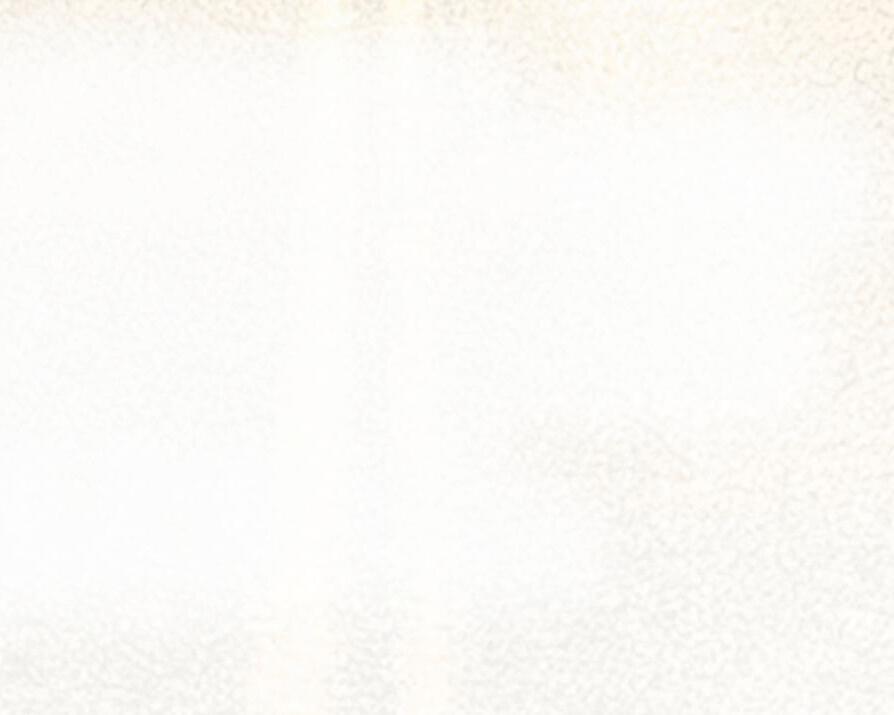Big Apple turns rotten



By The Jewish Star
Friday’s White House press conference was expected to be a wild, bruising affair.
The script was simple: President Donald Trump (a 79-years-old ruffian, undisputed champion of take-no-prisoners political theater) would tutor greenhorn Zorhan Mamdani (at 34 two generations his junior, a silver spoon-fed political novice — an immi-
grant!). After reading the riot act, president would put the mayor-elect in his place.
But Trump and Mamdani ignored the script and improvised instead.
Downplaying but not denying their differences (Trump’s called Mamdani a Communist, Mamdani’s called Trump a fascist), both men surprisingly appeared to relish an ability to get along (if not a genuine affection).
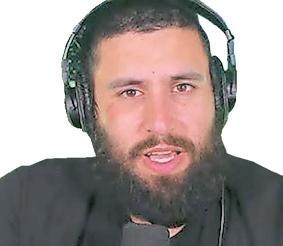
New York has seen thousands of demonstrations since October 2023, but what happened last Wednesday night marked a moral rupture.
A crowd did not gather outside a consulate or a corporate tower. It gathered at the doors of a synagogue. It gathered to frighten Jews. It gathered while the incoming mayor of the largest Jewish community in America searched for language that would allow him to acknowledge hatred without condemning those who delivered it.
This was not activism. It was a show of force.
A masked protester climbed above the crowd of roughly 200 and shouted the words that defined the night.
“We need to make them scared.”
His target was a house of worship — the Park East Synagogue on Manhattan’s Upper East Side — a place that stands under the protection of the First Amendment and its guarantees of free exercise, free assembly, and free speech. Those protections are designed to ensure that Americans may enter a sacred space without intimidation. On this night, that constitutional promise was violated in full view of the city.
Inside, families attended a routine Nefesh B’Nefesh event about moving to Israel. Outside, the chants became vicious.
“Death to the IDF.”
“Globalize the intifada.”
“Take another settler out.”
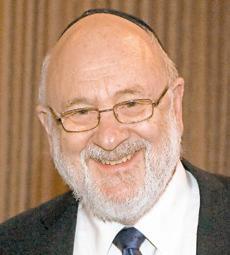
e may or may not have been an antisemite, but he sure was an abrasive personality. He was my seatmate on an
Amtrak train as I was returning to Baltimore from New York some years ago.
As I recall, it was at the end of a particularly long and grueling day for me. I had a series of rabbinical meetings, delivered a talk during lunch which provided me no opportunity to eat, and was involved in an unsuccessful attempt to keep the marriage of a young couple from breaking up. I was looking forward to the respite of some quiet time on the return
trip to my home in Baltimore, but even that luxury was denied to me that evening. I sat down, as I always try to do, in the window seat. This fellow entered the railroad car and walked past me in search of a seat for himself. There were several seats that he could have chosen, but for some reason he returned to where I was sitting, glared at me, and sat down with a gesture of dissatisfaction.
When Jews are targeted, the city’s moral confidence dissipates. The condemnation becomes conditional. The clarity evaporates.
Some protesters dispensed with politics entirely.
“You are part of a death cult.”
“You rapist pedophiles.”
Protesters did not gather at a distance. They positioned themselves directly at the synagogue entrance. They forced attendees to walk through jeers and raised cameras that labeled them “settlers.” They posted videos online for humiliation.
The intention was unmistakable. This was not a political rally. It was a deliberate attempt to make Jewish religious life feel unsafe. It was an effort to convert the entrance of a synagogue into a psychological checkpoint.
If this scene had unfolded at a church or a mosque, New York’s elected officials would have raced to microphones to condemn it as an assault on religious freedom. The outrage would have been unified and immediate.
Yet when Jews are targeted, the city’s moral confidence dissipates. The condemnation becomes conditional. The clarity evaporates.
Then came the mayor-elect.
Zohran Mamdani was presented with a test that required no complexity. A mob had surrounded a synagogue. Jews were told ex-
I immediately sensed that I would not experience the peaceful train ride that I had anticipated. I tried burying my head in the book I was reading, but that was not sufficient insulation from my neighbor’s insistence upon conversation.
“You are obviously Jewish,” he began. “Your yarmulke, for one thing, is a dead giveaway. Plus, I see that you are reading a Hebrew book.”
By Rikki Zagelbaum, JNS
President Donald Trump has signed an executive order “modifying the scope of the reciprocal tariff with respect to certain agricultural products,” which offered a reprieve to religious Jews.
Among the excluded items were “etrogs,” “date palm branches, myrtus branches or other vegetable material, for religious purposes only” and “bread, pastry, cakes, biscuits and similar baked products, nesoi, and puddings, whether or not containing chocolate, fruit, nuts or confectionery, for religious purposes only,” which includes matzah.
Rabbi A.D. Motzen, national director of government affairs at Agudath Israel of America, told JNS that concerns about the cost of religious items surfaced “literally minutes” after Trump announced the tariff program in the Rose Garden on April 2.
“We don’t have a position on tariffs or trade policy,” Rabbi Motzen said, of Agudah. “Our only concern was to protect our community from a sudden price increase of items that are essential to our religious practices and that could not be readily
produced in the United States.”
The exclusions were announced on Nov. 14.
The Trump administration’s reciprocal tariff system, introduced earlier this year, adds blanket charges to all imports and layers additional penalties on countries whose trade with the United States it considers unbalanced. Since Israel exports more to the United States than it imports, Trump imposed a 15% tariff on the Jewish state’s goods.
James Kahn, a former vice president of research at the Federal Reserve Bank of New York, told JNS that Trump opting to carve out a religious exemption for Passover and Sukkot items was “a smart political move.”
“An influential group cared deeply about it, and exempting these items doesn’t disrupt any major US industry,” said Kahn, an economics professor and chair of the department at Yeshiva University. “There is some domestic production of etrogs and of matzah, but not enough for this exemption to matter economically.”
“Symbolically, it helps maintain good relations with the Jewish com-

munity and with Israel,” he said.
A pending Supreme Court case could upend the tariff program completely.
Trump imposed the duties under emergency economic powers. If the justices rule that the declared emergency was not justified, the administration would need to find a new legal
basis for the tariffs or withdraw them.
Kahn said that the tenor of questions suggests that the court may well take that view.
For matzah, the stakes were especially high. Motzen, of Agudah, said that roughly 80% of machine-made matzah sold in the United States is imported from Israel. The tariffs would
have added another 15% in costs for importers.
That increase would have sharply raised prices for Jewish families that rely on such matzah for Passover observance, he said.
Ahead of last Passover, the Rabbinical Alliance of America-Igud Harabbonim, which represents more than 950 Orthodox rabbis across the country, urged the administration to exempt Israeli matzah, calling it “an essential and irreplaceable part of their religious observance.”
The group also requested exemptions for tefillin and mezuzah scrolls, which were not included in the final order.
Over the next seven months, Agudah and other Jewish groups pressed the Trump administration to create exemptions for religious items, including the Sukkot items and matzah.
Rabbi Motzen said that the administration was “receptive immediately” and that the final decision was thanks to collaborative efforts among the White House faith office, the US Trade Representative and the US Departments of Commerce and of Treasury.
plicitly to be afraid. The First Amendment was trampled at the threshold of a house of worship. The obligation of a mayor-elect is simple. Condemn the mob. Defend the synagogue. Affirm
the inviolability of religious liberty. He refused.
Instead, through his spokesperson, he issued a statement that shifted suspicion toward the victims: “The Mayor-elect has discouraged the lan-
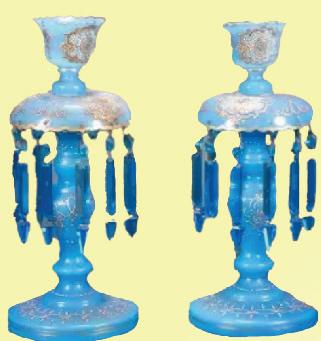
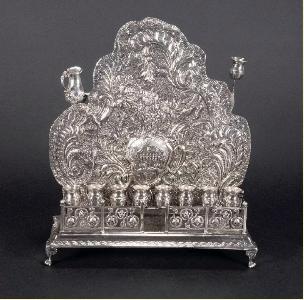







guage used at last night’s protest and will continue to do so. He believes every New Yorker should be free to enter a house of worship without intimidation, and that these sacred spaces should not be used to promote activities in violation of international law.”
The final clause was the most revealing. It was aimed squarely at Nefesh B’Nefesh. Yet Nefesh B’Nefesh violates no law of any kind. It assists Americans who voluntarily choose to move to Israel.
The accusation was invented. It functioned as a justification. It implied that the synagogue’s event was suspect and that the mob’s fury might have been warranted.
By implying that a synagogue’s event might be unlawful, the mayor-elect did something more troubling than misunderstand Nefesh B’Nefesh. He crossed into territory the First Amendment explicitly forbids.
The government has no authority to judge whether a lawful religious event is ideologically acceptable. The First Amendment restrains the state, not the congregation.
Mamdani’s criticism was not simply mistaken. It was a direct affront to the constitutional protection that keeps religious life free from political intimidation.
This was not moral leadership. It was
moral inversion. It was the transformation of victims into culprits and of aggressors into people with understandable grievances. It told the mob that their tactics were legitimate. It told the Jewish community that their religious life is subject to political approval.
What Mamdani offered was not leadership. It was an alibi for bigotry.
The masked agitator outside Park East Synagogue revealed the message the mob wanted delivered.
“We need to make them scared.”
The message from the mayor-elect was even more troubling. It suggested that intimidation might be understandable.
When a synagogue is targeted and the city’s future leader instinctively scrutinizes the Jews inside rather than the mob outside, something foundational has shifted. New Yorkers must recognize this moment for what it is.
If the city does not defend its synagogues now, there may come a time when it discovers it can no longer defend much of anything at all.
Daniel Mael, a prolific advocate for Israel and its people, authors The Mael Review on Substack (danielmael.substack.com). Write: Columnist@TheJewishStar.com












By Melissa Berman, Nassau Herald
Reuben Maron, former executive director of the
Hebrew Academy of the Five Towns and Rockaway and administrative director of Brandeis Hebrew Academy in Lawrence, was niftar on Nov. 13, at Long Island Jewish Medical Center in New Hyde Park, after battling an illness. He was 83.
After serving in the Naval Air Forces during the Vietnam War, Maron worked for Templon Spinning Mills, in North Carolina, before founding Kingswood Sportswear and English Sportswear, in Lynbrook, in what used to be the Mangrove Feather factory and is now the Langdon, an apartment building.
Maron transitioned into Jewish education after retiring from the fashion industry. He became HAFTR’s treasurer in 1982, served as its board president from 1992 to 1995, and became executive director in 2009. He retired at the end of 2017 but remained on the school’s finance and past presidents committees.
“He has given hundreds, if not thousands, of young Jewish minds the ability to receive a modern Orthodox education,” his wife, Sandra Maron, said. “He was the person who dealt with parents about tuition — such dignity and respect. I know firsthand. I was one of them.”
While at HAFTR, Maron led an effort to increase the enrollment from under 1,000 to its current 1,400, including 270 children in the nursery program.

“I very much valued the thoughtfulness, insight, and empathy that Mr. Maron brought to every issue,” Naomi Lippman, the head of school at HAFTR High School, wrote in an email.
“He was a wise, compassionate school leader who was sensitive to the needs of our students and their families and appreciative of the dedication and professionalism of our faculty. His steadfast commitment to
HAFTR’s growth and to the enhancement of every student’s academic and religious experience was an inspiration for all of us.”
HAFTR’s current executive director, Ari Solomon, added in an email that Maron was devoted to the school as a parent, board member, president and executive director.
“His desire to facilitate families to be able to send their children to a Jewish day school was admired by many,” Solomon wrote. “My time spent with Mr. Maron as a parent, camp director, and later as the Assistant Director of HAFTR was both meaningful and educational. He leaves a legacy that will not be forgotten.”
After leaving HAFTR in 2018, Maron became the administrative director at Brandeis Hebrew Academy. He was in charge of expanding the 200-student enrollment, retaining students, building the school’s academic reputation and improving the physical plant.
“He loved working with the Brandeis family and so enjoyed going to work every day up until just a few weeks ago,” Sandra said. “They loved him there and were so good to him. He was a very lucky man, being able to work and enjoy it up until the end.”
Raz Levin, head of school at Brandeis, said that Maron had the remarkable ability to recognize what students and teachers needed to thrive.
“He was unwavering in his commitment to bringing the latest and most innovative educational tools to
Brandeis,” Levin wrote in an email. “Reuben made sure we had what was necessary to strengthen and elevate our curriculum. Brandeis is a better school because of his vision, his partnership, and his unwavering support.”
Leslie Gang, director of admissions at Brandeis, worked with Maron for 15 years, beginning at HAFTR.
“Throughout that time, it was clear that above all else, Mr. Maron believed that every Jewish child deserved the opportunity to receive a Jewish education,” Gang emailed. “Mr. Maron was not only an exceptional Administrative Director but also a compassionate mentor and role model.”
Maron met his wife of 58 years, Sandra Engelstein, on a date set up by a cousin. The couple dated for four years and were married on July 2, 1967. They moved to Woodmere after their first son, Evan, was born in 1970, and joined the Young Israel of Woodmere
Maron’s levaya was held at Boulevard-Riverside Chapels in Hewlett on Nov. 14.
In addition to his wife, he is survived by three sons and their spouses, Evan (Royce), Richard (Naomi) and Avery (Robin); grandchildren Matthew, Daniel (Shana), Sam, Gabriel (Julia), Eitan, Dalia, Zachy, Lilly and Phoebe; and great-grandchildren Max and Sarah.
“Reuben Maron, Reueven ben Mordecai, was the ultimate mensch,” Sandra said. “Our lives are better for having known him.”










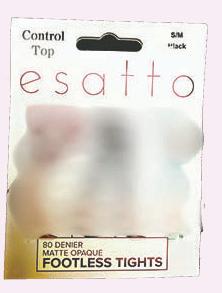



By Menachem Wecker, JNS
At first blush, a display case in a new Museum of the Bible exhibition in Washington seems unremarkable. An earthy orange jug with handles overlooks two small oil lamps, all set before a reproduction of part of David Roberts’s c.1850 painting of Titus commanding the siege and destruction of Jerusalem in 70 CE.
Navit Popovich-Geller, a Jerusalem native and curator at the Israel Antiquities Authority, told JNS that the “simple cooking pot,” set alongside “simple oil lamps,” shows visible signs of use.
Josephus, we may recall, described Jewish rebels hiding in cisterns — water storage tanks — and drainage tunnels from the Romans. “They thought they would be saved, and the Romans would go,” Popovich-Geller said. “It didn’t happen.”
To stay alive, people need a cooking pot, lights and jugs from which to drink. “Think about those people, who sat there in the drainage tunnel. … You can really relate to it, even though it’s just a cooking pot,” he said.
She told JNS the objects are lighter and more fragile than one might think. A takeaway from the objects, and from the broader Dead Sea Scrolls exhibit (through Sept. 7) at the Museum of the Bible in Washington, is that Jerusalem was a bustling place.
“It was a sacred city, the Temple city, but also a big metropolis with a lot of commerce and a lot of activities,” she explained. “Sometimes people forget it was not just the Temple.”
Looking at the bowl and lamps with
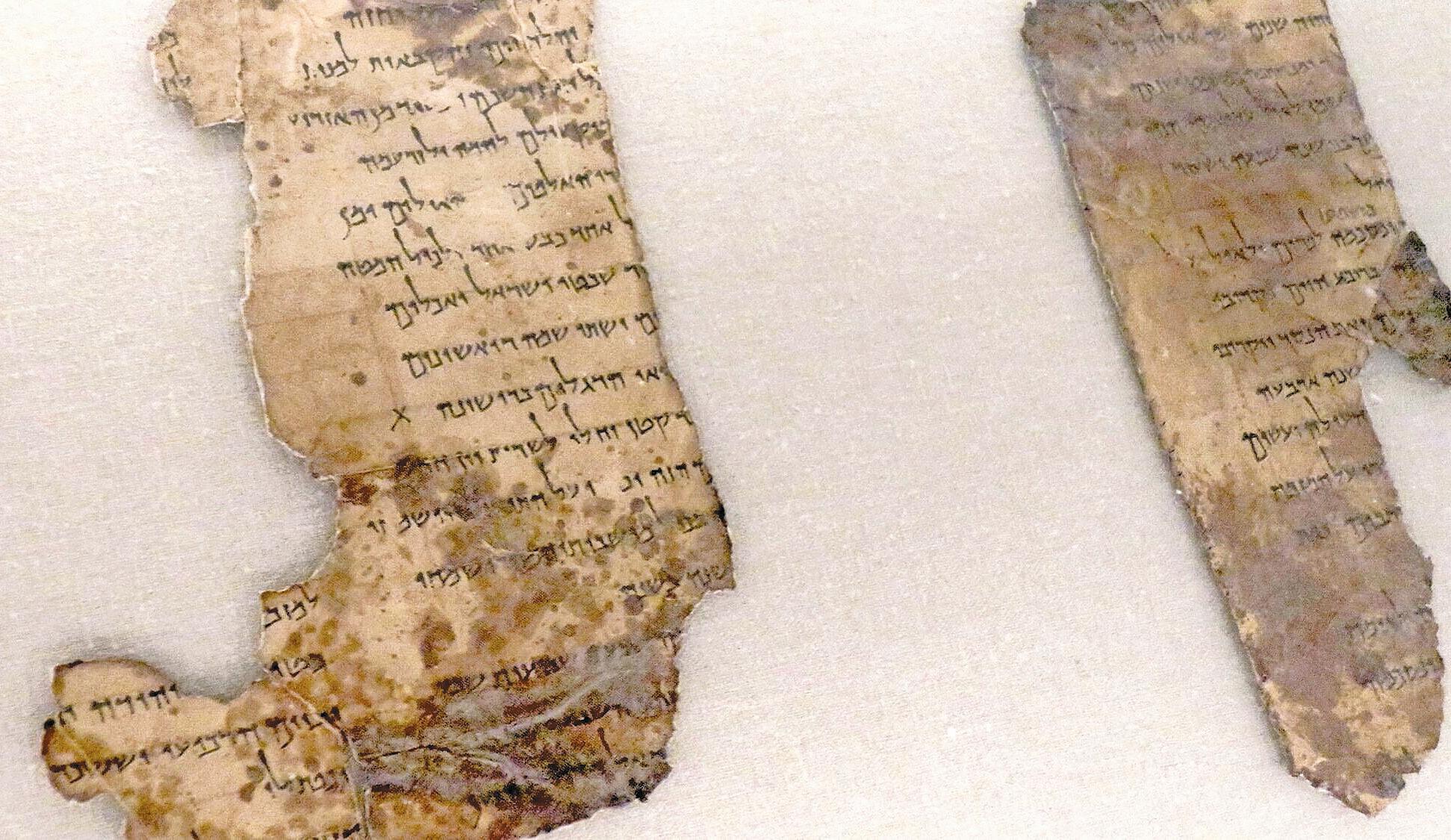
Popovich-Geller required turning one’s back on fragments of the Dead Sea Scrolls — arranged outward facing in a circle at the museum to prevent the “massive congestion points” and twohour lines in the previous venue for the show, according to Rena Opert, director of exhibits and collections specialist at the Bible Museum.
The scrolls hibernate for five years after they are shown, for just a few months, for their own protection, so the fragments on view in Washington will change two more times before the exhibit ends.
Robert “Bobby” Duke, chief curatorial officer at the Bible Museum and director of its Scholars Initiative, wrote his dissertation on Aramaic documents from Qumran and has studied the Dead Sea Scrolls extensive-
ly, including in Israel.
“The Dead Sea Scrolls are the most significant archaeological discovery ever,” he said. “I’ve seen King Tut’s treasures. Fantastic. They’re beautiful, but they don’t have an ongoing reality when it comes to people of faith today. The Dead Sea Scrolls are directly connected to people who read scripture today.”
The scroll fragments “don’t have the same visual appeal, but this exhibit is so much more than just the fragments,” he said. “It’s telling an entire story.”
“The whole exhibit starts in the Galilee and then makes its way down to the wilderness outside of Jerusalem, so it really tells the whole story of Second Temple Judaism, which is so formative for rabbinic Judaism and
for the development of the New Testament world,” he said.
‘Kind of in awe’
Opert, the Bible Museum’s director of exhibits, led JNS on a tour of the show that ran about an hour and a half on Friday, the day before it opened to the public.
Curated by three Israel Antiquities Authority scholars — Popovich-Geller and her colleagues Risa Levitt and Joe Uziel — and designed by the production company Running Subway, the show is organized by time and place.
“They want to transport you from Washington to Israel, and then they start in the Galilee and work the visitors down through Jerusalem then out to Qumran in the Judean desert and then also through time,” Opert said, as she led her visitors through an introductory room with video screens and a few artifacts. “You begin in present day and you go back to Second Temple Judaism.”
After the video completed, a screen lifted to reveal a doorway into the next gallery, which displayed a first century fishing boat, which was found in 1986. A case displayed fragments from the real artifact, all set in an artistic reproduction of the boat to give viewers a sense of its scale.
“For the audience, both Jewish and Christian, it’s interesting, because you’re looking and thinking about the fishing villages that would have surrounded the Sea of Galilee,” Opert said. “For Christians, to imagine Jesus and his followers in that area and in
boats such as these.”
The exhibit was planned well before Oct. 7, according to Opert, who recalled the museum having conversation about it at least as far back as 2022. The museum (which is funded by the Green family, founders of Hobby Lobby, who are outspoken evangelical Christians) had nothing to do with the show, which it rented and which arrived in full, she said. Popovich-Geller said that she and her two Israel Antiquities Authority colleagues had complete control over curatorial decisions, and they wrote the labels and wall texts.
As Opert entered the next room, she said that the museum merged two galleries to fit the temporary exhibit, which is displayed on the museum’s fifth floor, near its gallery on “the people of the land,” a long-term exhibit from the Israel Antiquities Authority. (The latter gallery might be the only place in Washington, beyond its embassy, where the Jewish state tells its own story.)
Standing in front of a timeline with objects that aim to help viewers understand who lived in Israel from 70 CE to the present, JNS asked Opert what object or objects she would want to add to the show if it didn’t arrive already formed. (Elsewhere, the museum tends to refer to BC and AD, although labels for this exhibit use BCE and CE.)
“They did a really good job with it, because it’s not just a display of the scrolls, which of course in and of them-
Continued on next page

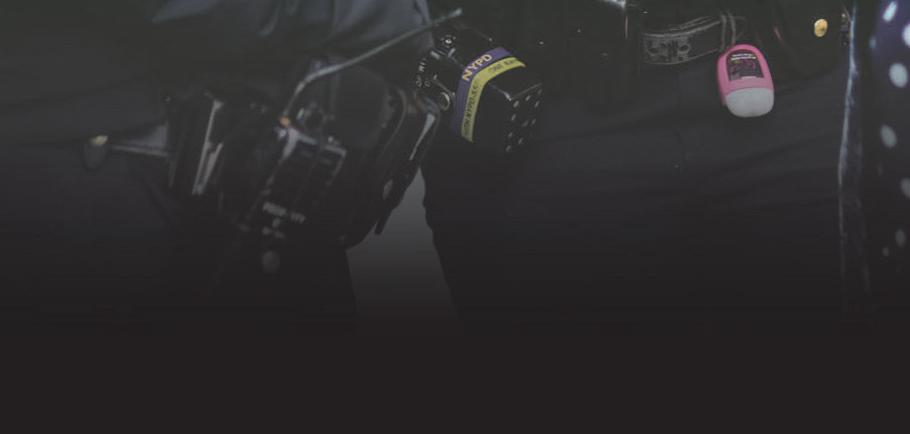




Shootings down 54% citywide since 2022
NYC’s “Community Link” improves neighborhood quality-of-life and safety issues through coordinated multi-agency response
New York is dedicated to being the best place to raise a family. Tens of thousands of unlawful guns removed, more than 110,000 ghost cars and
all thanks to the over 300,000 of your neighbors working to build a safer, more affordable city.


That’s New York City’s agencies delivering for you. Every day. Everywhere.

selves would be powerful, but they added so many wow objects for the audience that I think you have moment after moment where you’re kind of in awe,” she said, “starting with the first century boat, and we’re about to round the corner to the Magdala stone.”
Around the corner, the Magdala stone, which was found in a first-century synagogue in Magdala, the city associated in Christian scripture with Mary Magdalene, was “likely used for the liturgical reading of the Torah and other sacred scrolls,” according to the Bible Museum.
“It features detailed reliefs of the temple and its ritual artifacts, including the earliest-known carving of the Temple menorah, and suggests the sculptor had made the pilgrimage to the temple in Jerusalem,” the museum website states. “These reliefs provide insights into the role of synagogues as sacred spaces prior to the temple’s destruction.”
Opert told JNS that she has “already witnessed people crying over it. It’s really compelling.”
“I’m as moved by this as I am by the Dead Sea Scrolls,” she added of the stone. “I think they did a really good job with the storytelling.”
The stone dates to before the destruction of the Second Temple. “We can’t say anything with certainty about it, other than that we might think that the artist had seen the vessels in the Temple prior to the destruction,” Opert told JNS.
“So seeing the depiction of the menorah here from the Temple is something that’s very moving to a Jewish audience, and probably a Christian audience as well,” she said.
The stone also depicts other vessels, arches, and rosettes, or rose-shaped designs that often appear as Jewish symbols.
As viewers pass the Magdala stone, they walk over a ramp, designed to look like it is made of Jerusalem stone and which includes an actual stone from the road, over which pilgrims walked in the Second Temple period.
Like another stone in the long-term Israel Antiquities Authority gallery at the museum and a three-and-a-half ton stone from the Western Wall at the end of the exhibition, visitors can touch the object.
In the next gallery, objects are installed on temporary walls — which look like Jerusalem stone — and in display cases in the middle of the room, and viewers can look through several slits in the walls to see diorama-like installations behind glass behind the walls that offer glimpses of relevant scenes.

Among the displayed items are shells, dice, leather sandals, linen textiles used to protect the scrolls and a date and a date pit. One case contains a Tyrian shekel, minted before 19 BCE and weighing half an ounce, which was the only coin accepted as for a Temple tax. A separate gallery tells the story of Masada.
The next gallery, a large open space, contains the Dead Sea Scrolls and the case with the cooking pot and lamps.
“People know ‘Dead Sea Scrolls,’ the phrase. We wanted to set it in the time and place, so that the viewer can comprehend and understand that it was not in a void. It had context,” Popovich-Geller, the curator, told JNS.
She told JNS that the Israel Antiquities Authority plans to open a visitor center in about one-and-a-half to two years. It will have a small exhibit with a few scrolls on view, including Dead Sea Scrolls, she said.
The display of the scrolls juxtaposes the fragments, which can be very difficult to read due to their size and condition, alongside images of the texts and interactive displays that explain them.
From when the exhibit opened on Saturday until February, the first rotation of Dead Sea Scrolls includes 4Q7 Genesis(g), 11Q10 Targum Job, 4Q83 Psalms(a), 4Q210 Astronomical Enoch(c), 4Q434 Barkhi Nafshi(a), 4Q491 War Scroll(a), Eschatological Commentary A and 11Q20 Temple Scroll(b), per the museum website.
From February to May, the scrolls on view will be 11Q5(a) Psalms (Great Psalms Scroll Fragments), 4Q27 Numbers(b), 4Q111 Lamentations, 4Q264 Community Rule(j), 4Q448 Apocryphal Psalms and Prayer, 4Q274 Tohorot A (Purities), 4Q400 NonCanonical Psalms A and 4Q530 Book of the Giants(b), per the museum.


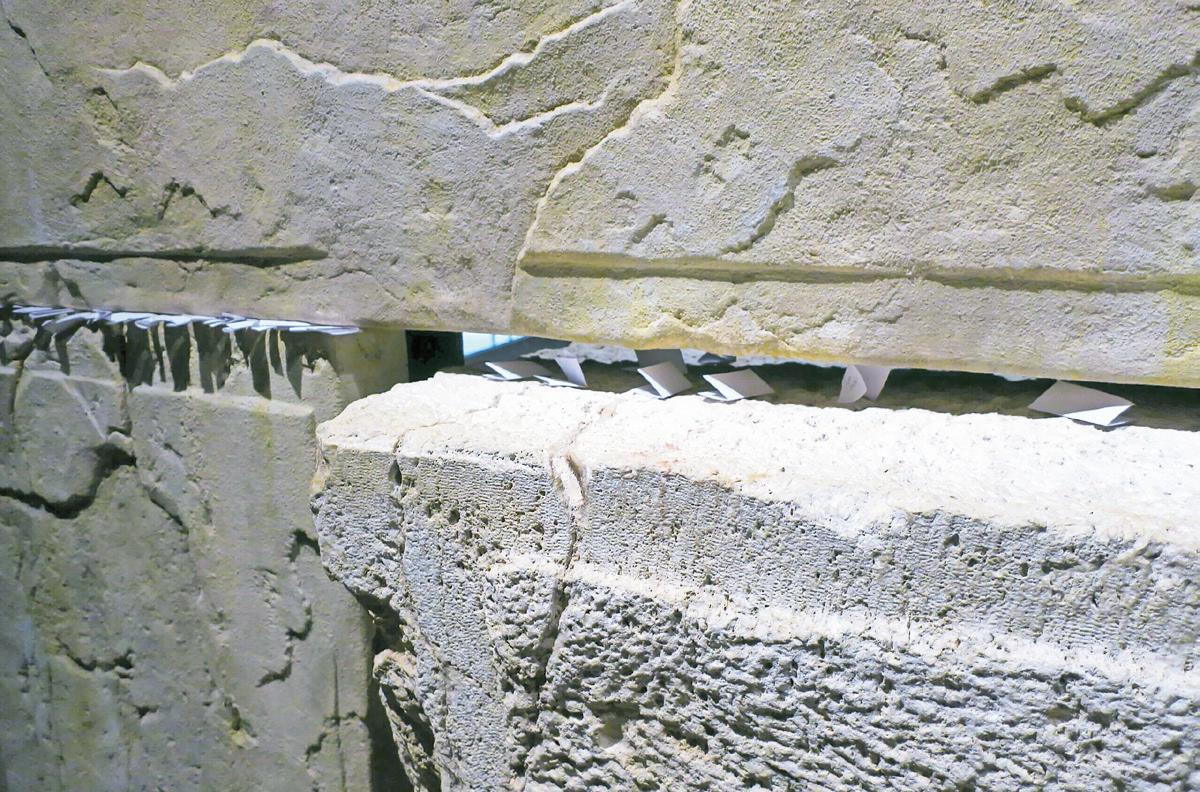
And from May to September, the third planned rotation is 4Q58 Isaiah(d), 4Q197 Tobit(b), 4Q130 Phylacteries C, 4Q534 Birth of Noah(a), 4Q218 Jubilees(c), 4Q275 Communal Ceremony, 4Q258 Community Rule(d) and 4Q271 Damascus Document(f).
The Genesis scroll on view includes the first chapter of the book, starting “In the beginning, G-d created the heavens and the earth.”
The scrolls is “remarkable” for “how closely it matches Hebrew bibles copied nearly 1,000 years later — demonstrating extraordinary consistency across a millennium,” per a label in the exhibit. “Many other biblical texts from Qumran show variations from later versions, making Genesis’s stability significant.”
Scholars have been able to read the “dark, coarse parchment fragments” with multispectral imaging, which can reveal the text, it adds. A lower part of the fragment sustained damage before the text was written, “as indicated by the ancient stitches used to repair the leather and the text which leaves empty spaces around the stitches,” per the label.
An eschatological commentary fragment includes commentaries on parts of 2 Samuel 7 and Psalms 1-2, “focusing on restoring David’s dynasty through the coming Messiah and the end of times,” per a label. “During the Second Temple period, many Jews anticipated a future anointed king who would restore Israel’s independence and establish G-d’s kingdom. This was not yet the Christian concept of divine savior, but rather an expected political and religious leader from David’s lineage.”
The Enoch scroll has never been on display before, according to Opert. Per the label, it comes from what
is “among the earliest surviving Jewish texts outside the Bible,” dated to the third or fourth century BCE. The Books of Enoch “expand on brief biblical hints about Enoch,” great-grandfather of Noah, who, per Genesis 5:24 “walked with G-d, and he is no more, because G-d took him.”
“The Books of Enoch elaborate this into detailed accounts of Enoch’s heavenly ascent and angelic journeys, likely containing our earliest version of the fallen angels myth,” the label says. “These books profoundly influenced the Dead Sea Scrolls community, shaping their distinctive 364-day solar calendar.”
‘How young we are’
As Opert led JNS through a digital gallery devoted to the Ten Commandments scroll, she said that a local Jewish day school and synagogue has expressed interest in seeing the exhibit.
In a science gallery, Opert pointed out a photo of scholars chain smoking over the scrolls. “You’d think there would be some fear of incinerating them,” she said.
She also noted technologies that show how scholars have digitally unraveled fragile scroll fragments to read them in previously impossible ways.
A label near the 3.5 ton Jerusalem stone at the end of the exhibit — which simulates the Kotel but without a mechitzah partition — notes that “the term ‘Wailing Wall,’ coined by nonJewish observers during the Ottoman and British rule who witnessed people mourning the Temple’s destruction, is considered disrespectful by many Jews, who prefer ‘Western Wall’ or ‘Kotel,’ as it focused on the wall’s physical location.”
The museum says that visitors may place prayers or messages in the simulated wall. “A cherished tradition, dating

to the 18th century, invites visitors to place written prayers (kvitlach) between the stones,” a wall text states. “These notes, expressing personal hopes and requests, are collected twice yearly and buried on the Mount of Olives.”
On the other side of the wall, a live feed of the Kotel was temporarily paused, as it was already Shabbat in Israel while JNS viewed the exhibit.
JNS asked Popovich-Geller, the curator, about recent tendencies even in major news publications, to refer to Jews “believing” that there was a Temple in Jerusalem. The same publications used to refer to efforts to erase Jewish presence on that site, including claims from Palestinian leader Yasser Arafat, as denying what is a scholarly consensus about the Jewish Temples.
Popovich-Geller responded that the Israel Antiquities Authority focuses on objective scholarship and not politics, but
“there was a Temple — obviously there was a Temple. We find evidence of it,” she said. “I’m not a right-wing person politically, but Jews were there. We can’t bend the story — to tell there were no Jews is problematic.”
“I don’t even know what to say,” she added.
Duke, the museum’s chief curatorial officer, was asked separately about what it means to be around such ancient objects.
“I think being close to anything that old,” said Duke, who recently saw the pyramids in Giza, Egypt, “just to remind yourself that you’re looking at something that is thousands and thousands of years old.”
“Particularly for all of us in North America, where we are celebrating our 250th anniversary next year, you realize how young we are as a nation,” he said.

By Andrew Bernard, JNS
In just over 1,100 words, the Catholic Church issued a document 60 years ago that fundamentally changed the relationship between Catholics and Jews.
“In our time, when day by day mankind is being drawn closer together, and the ties between different peoples are becoming stronger, the church examines more closely her relationship to non-Christian religions,” Pope Paul VI wrote. “Since the spiritual patrimony common to Christians and Jews is thus so great, this sacred synod wants to foster and recommend that mutual understanding and respect.”
That document, “Nostra Aetate,” Latin for “in our time,” and issued as part of the Second Vatican Council, “totally reoriented the Catholic Church’s outlook toward other religions,” Philip Cunningham, director of the Institute for Jewish-Catholic Relations at St. Joseph’s University in Philadelphia, told JNS.
JNS spoke with Cunningham and Rabbi Noam Marans, director of interreligious affairs at the American Jewish Committee, both of whom were in Rome for the anniversary at the end of October, about the legacy of “Nostra Aetate” and what it means for Catholics and Jews today.
“It reversed centuries of Christian negative teaching about Jews, most particularly that they were under a sort of collective guilt and curse upon them by G-d for the crucifixion of Je-
sus,” Cunningham said. “That basic ‘teaching of contempt,’ as it has come to be called, contributed to anti-Jewish sentiment down through the centuries in Christian Europe and later other places. It rejected and repudiated all such rhetoric.”
The text of “Nostra Aetate” cites the Gospel of John in noting that Jewish authorities pressed for the death of Jesus but says that the crucifixion “cannot be charged against all the Jews” of that time or the present and “decries hatred, persecutions, displays of antisemitism, directed against Jews at any time and by anyone.”
Marans described that declaration as creating “a transformative period in Jewish history.”
“The main vehicle for demonizing the Jewish people — the Catholic Church — was transformed in tangible ways,” Marans said.
Even as Catholic-Jewish relations are arguably better than at any point in history, Catholic leaders have been deeply critical of Israel’s conduct in Gaza, with Pope Francis, who died in April, saying that Israel should be investigated for war crimes.
“According to some experts, what is happening in Gaza has the characteristics of a genocide,” Francis wrote in 2024.
Israel’s ambassador to the Holy See, Yaron Sideman denounced the pope’s claim.
“There was a genocidal massacre on Oct. 7, 2023 of Israeli citizens, and


since then, Israel has exercised its right of self-defense against attempts from seven different fronts to kill its citizens,” Sideman wrote. “Any attempt to call it by any other name is singling out the Jewish state.”
Disapproval of Israel’s handling of the war against Hamas is also reflected in polling of lay Catholics in the United States.
American evangelical Protestants and Jews each have about a 70% favorable view of the State of Israel, whereas Israel’s favorability with Catholics is now underwater, with 53% saying they have an unfavorable view of the Jewish state, per a Pew Research Center poll from April.
“It’s perhaps among the most challenging in a series of moments in Catholic-Jewish relations over the last 60 years,” Marans told JNS.
Since Francis’s death and the as-
cension of Pope Leo XIV to the throne of St. Peter in May, the new pontiff has repeatedly referred to “misunderstandings” between Catholics and Jews, most recently at the general audience in St. Peter’s Square marking the 60th anniversary on Oct. 29.
“We cannot deny that there have been misunderstandings, difficulties and conflicts in this period, but these have never prevented the dialogue from continuing,” Leo said. “Even today, we must not allow political circumstances and the injustices of some to divert us from friendship, especially since we have achieved so much so far.”
Marans and Cunningham disagreed about whether Leo’s statements were an explicit attempt to repair the damage his predecessor might have caused with his descriptions of Israel’s war against Hamas.
“I don’t think he’s speaking about Gaza, specifically,” Cunningham told JNS. Over “the 60 years since ‘Nostra Aetate,’ that there have been moments in Catholic-Jewish relations where there have been conflicts and controversies.”
Cunningham pointed to the opening of a Carmelite convent near Auschwitz in 1984 and the 1987 meeting between Pope John Paul II and Aus-
trian Prime Minister Kurt Waldheim, shortly after revelations about the latter’s role in deporting Jews from Greece and Yugoslavia to death camps during his service in the Nazi Wehrmacht, as examples of what Pope Leo might have been referring to.
“There is no doubt in my mind that this is about the present tense and not the history of the relationship,” Marans said.
“The last two years have been so traumatic for the Jewish people, certainly the most traumatic in my lifetime,” he said.
Marans added that following Oct. 7, 2023, “the Jewish people expected more from the Catholic church.”
One element that may have contributed to the ongoing tensions between the Catholic Church, Jews and Israel over Gaza is what Cunningham described as the modern church’s adoption of “almost a pacifistic position,” in contrast to the centuries when popes commanded armies as heads of the papal states or called for crusades in the Holy Land.
“For Catholic leaders, there has to be a line somewhere where selfdefense or preventing an enemy from attacking again becomes morally wrong when so many innocent lives are lost,” he said.
Aside from denouncing antisemitism, one effect that “Nostra Aetate” has had has been to reorient the Catholic Church’s understanding of its relationship to other religions and particularly its historical relationship with Jews, including Jesus’s life as a Jew.
“For the first time in the history of the church, a doctrinal treatise on the Jewish roots of Christianity was to take shape, which on a biblical and theological level would represent a point of no return,” Pope Leo said of the document in October.
“The theological topics that we can now discuss together in a sustained manner has literally not happened in the history of the world,” Cunningham said. “That sounds hyperbolic and amazing, but it’s literally the truth.”
What was originally understood
in “Nostra Aetate” as the opening of a religious dialogue might now have secular consequences as well, but Cunningham said that it’s unsurprising that that process has taken a long time and has involved the kinds of “misunderstandings” to which Leo referred.
“For almost 2,000 years, Jews and Catholics had never really spoken to one another, except in terms of disdain,” Cunningham said. “When the possibility of an opening for conversation on a deep level, a constructive conversation, emerged in 1965, it took time for Christians and Jews — Catholics in particular — to learn how to speak to one another, because we didn’t have much experience of it.”
Marans said he expected there to be more “bumps in the road” in Catholic-Jewish relations, including over the Israeli-Palestinian conflict, but pointed to the record of recent popes, starting with John Paul II, in visits to Auschwitz, the grave of Theodor Herzl, the Western Wall and other places of meaning to Jews and the State of Israel as reason for Jews to continue to engage with “Nostra Aetate.”
“Those images do make a difference in how the world perceives Jews, not only for the 1.4 billion Catholics in the world, but for all who pay attention to what popes do, and that’s a lot of people,” Marans said.
“If ‘Nostra Aetate’ had lay on a shelf, unattended, if infrastructure were not built around it, if the Catholic hand that had been extended was not received by a Jewish hand and most importantly, if the world did not see what these great religious exemplars were showing about what the Jewish people are and mean we would not be benefiting from the inter-religious harmony that we experience even in difficult times, especially in comparison to two generations ago and before that,” Marans said.
“That’s why ‘Nostra Aetate,’ a very brief document that doesn’t take very long to read, what it became, how it was applied — that’s why it’s important to Jewish people,” he said.



We will be bringing Mount Sinai’s top-ranked open heart surgeons to Oceanside beginning next year, so patients and their families don’t have to travel to NYC or to the North Shore for advanced cardiac care.
The Mount Sinai Fuster Heart Hospital at The Mount Sinai Hospital in Manhattan ranks No. 2 nationally for Cardiology, Heart, and Vascular Surgery, according to 2025 U.S. News & World Report ® That expertise is coming to our Oceanside campus.
If you or a loved one have suffered a cardiac event, consider making a donation in their name today.
Scan the QR code, visit bringinghearthome.org , or call Anne Fernandez in our Development Office at 516-377-5360 to learn more.

Donate today.
Together, we can bring the of Mount Sinai home to the South Shore.
In 5 Towns, it’s time to bake the
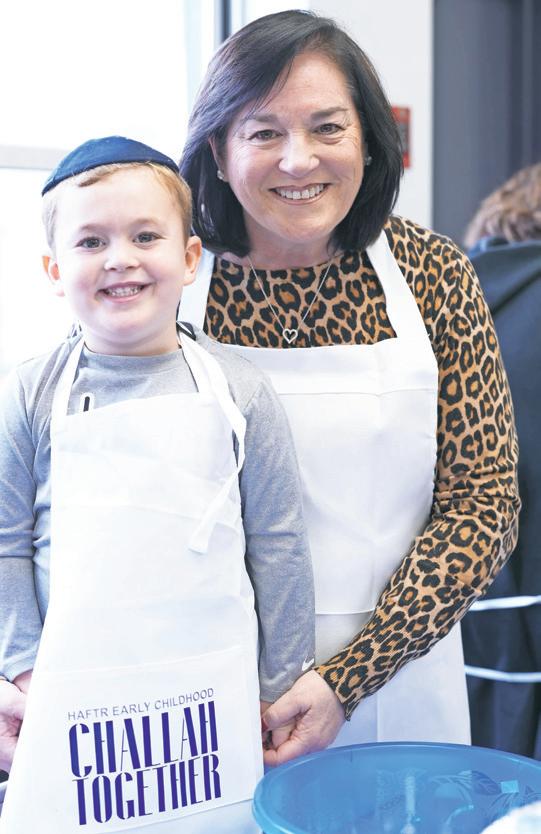


HAFTR came alive with the warmth and joy of Shabbat through a series of meaningful programs across all divisions.
Early Childhood pupils explored the magic of Shabbat through a Grandparent Challah Bake.


Lower School welcomed more than 200 families for its Challah Bake that included an art project in which students designed personalized flower boxes.
The Middle School hosted a Cholent Cookoff, transforming the hallway into a hub of delicious


aromas and spirited camaraderie.
In the High School, students experienced Shabbat through creativity and reflection. Girls participated in a Challah Bake, while the boys engaged in discussions of the halachot and values of Shabbat.
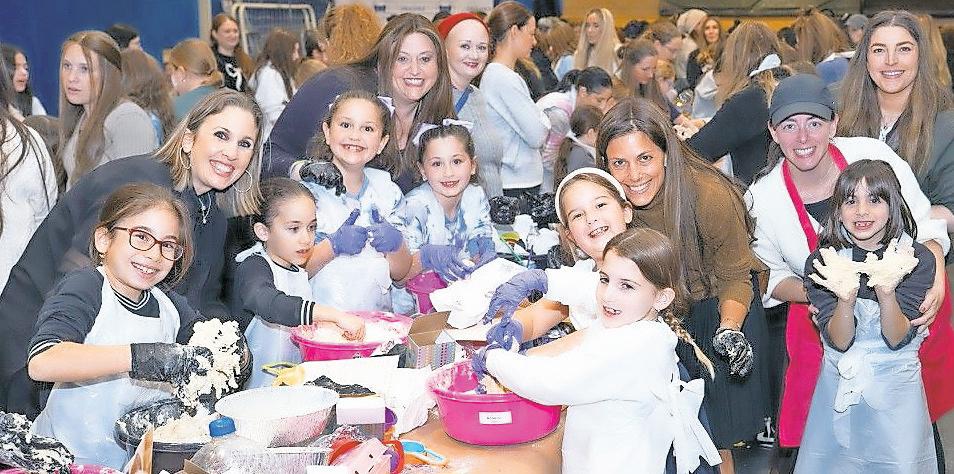
The delicious smell of challah filled the halls of the Hebrew Academy of Long Beach, as everyone baked. At the Lev Chana preschool program, children learned
about the mitzvah of hafrashat challah.
HALB’s Shaar Lev program had its own beautiful program. Shaar Lev meets after school and is for special needs students


who attend public school (which gives them an opportunity to learn with morot and Rebbeim when they are done with their regular school day.
Brandeis experienced a transformative Shabbat Across Brandeis, bringing together students, faculty and families for an elevation of kavod Shabbat, Torah learning and spiritual connection. From the earliest grades through middle school, every
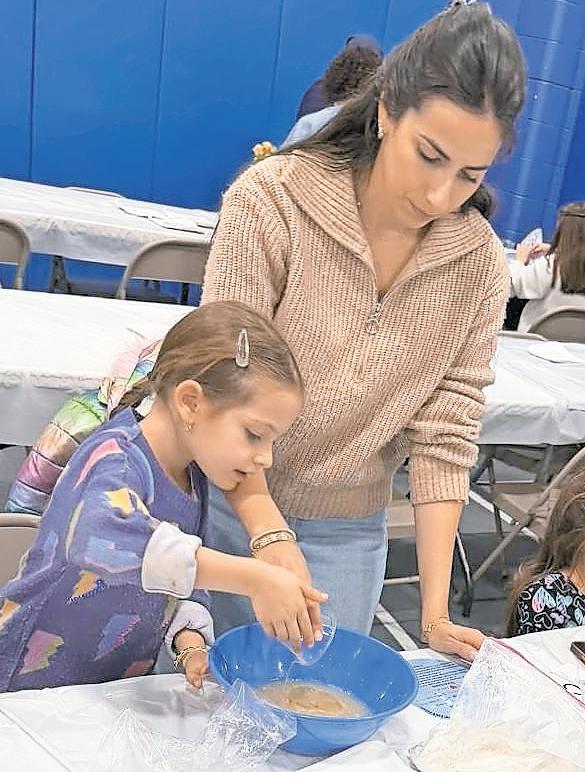
student had the opportunity to immerse in the beauty, halacha and kedusha of Shabbat in an engaging and memorable way.
The week opened with a Monday evening shiur by Rabbi Aaron Bain that emphasized the significance of preparing for
Shabbat throughout the week and how such preparation uplifts our ruchniyus and enriches our weekly avodas Hashem.

On Wednesday, middle school students participated in an exciting hands-on chulent-prep session. Thursday evening brought together parents and community members for a Challah Bake.
Friday programming began with an inspirational talk by Rabbi Simcha Hopkovitz of Young Israel of Hewlett, who shared a heartfelt story illustrating the eternal value of shemiras Shabbos.
Early childhood students enjoyed a warm and joyful Shabbat Oneg with Morah Stefanie, Hebrew-immersion music coordinator, followed by a joint oneg that celebrated the ruach of Shabbat in the sweetest way.
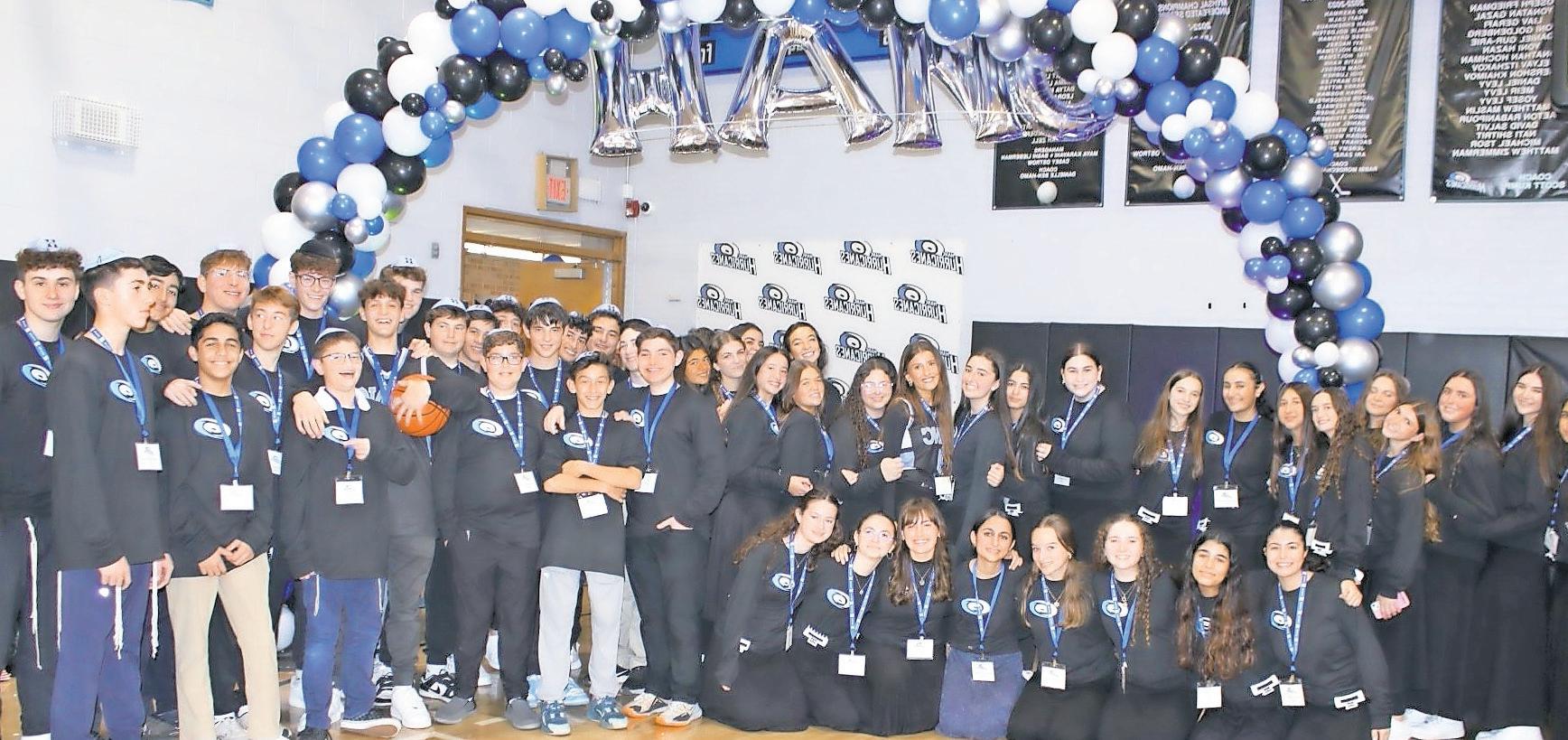
HANC High School welcomed nearly 500 prospective students and parents to its annual Open House, showcasing its theme: HANC Makes IT Happen.
Menahel, Rabbi Eli Slomnicki ’97 described the main components that
define this yeshiva: Aspirational Academics, Community Focus, Torah. The visitors experienced minilessons and course sequences in both Limudei Kodesh and General Studies. Parents participated in an Academic Showcase in new multipurpose rooms
MTA celebrated a schoolwide Shabbaton with achdus that spanned the weekend. While freshmen enjoyed an extra day, all of the grades validated the event’s theme: Together as One.

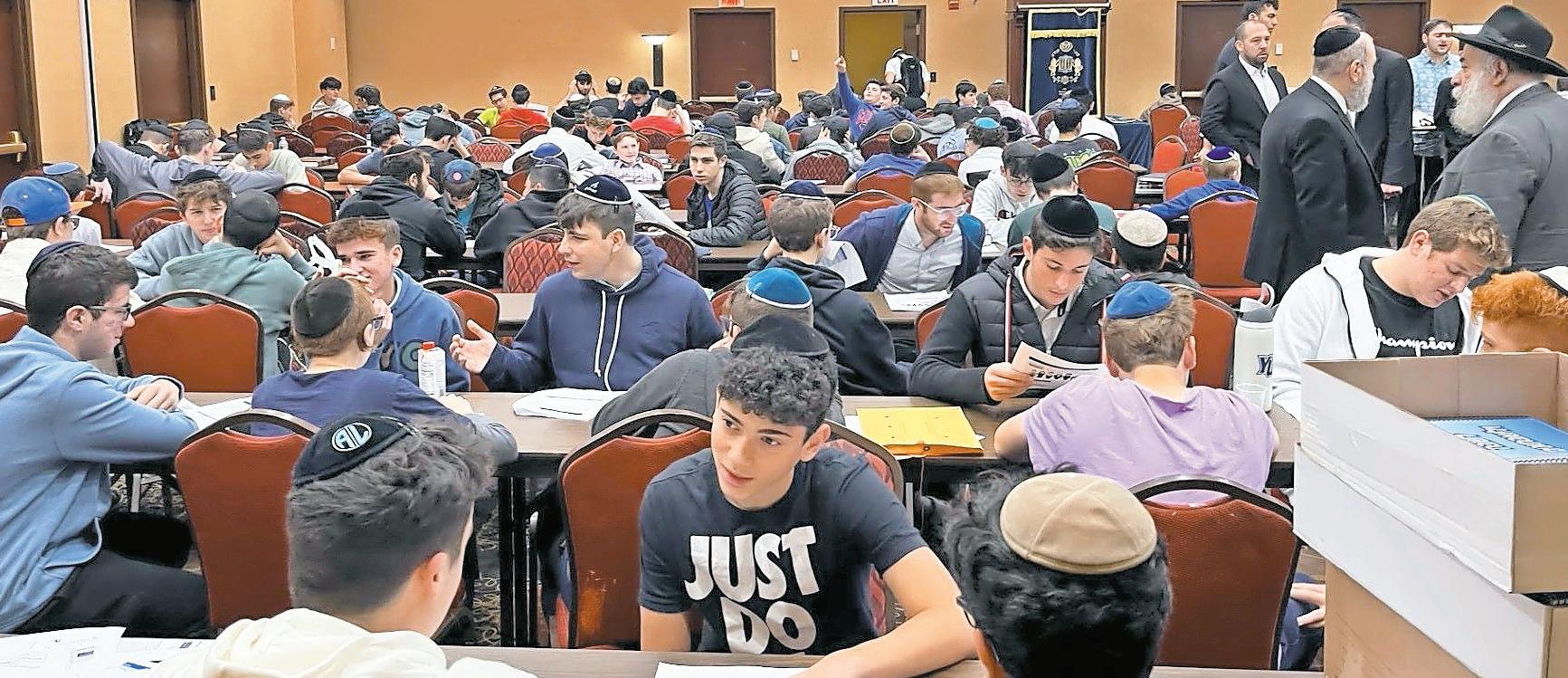

called Canes Common space, meeting administrators, directors and department chairs who were on-hand to answer questions. The program concluded with a Club Fair highlighting athletics and a broad selection of co-curricular clubs.

Brandeis Hebrew Academy moms and daughters gathered for Bedazzled Brachot, an evening of creativity, tehillim and purpose, featuring an address by Miriam Savetsky, a breast cancer survivor who shared her story of resilience. Savetsky reminded attendees of the importance of caring for themselves both physically and mentally, leaving the audience inspired and uplifted.



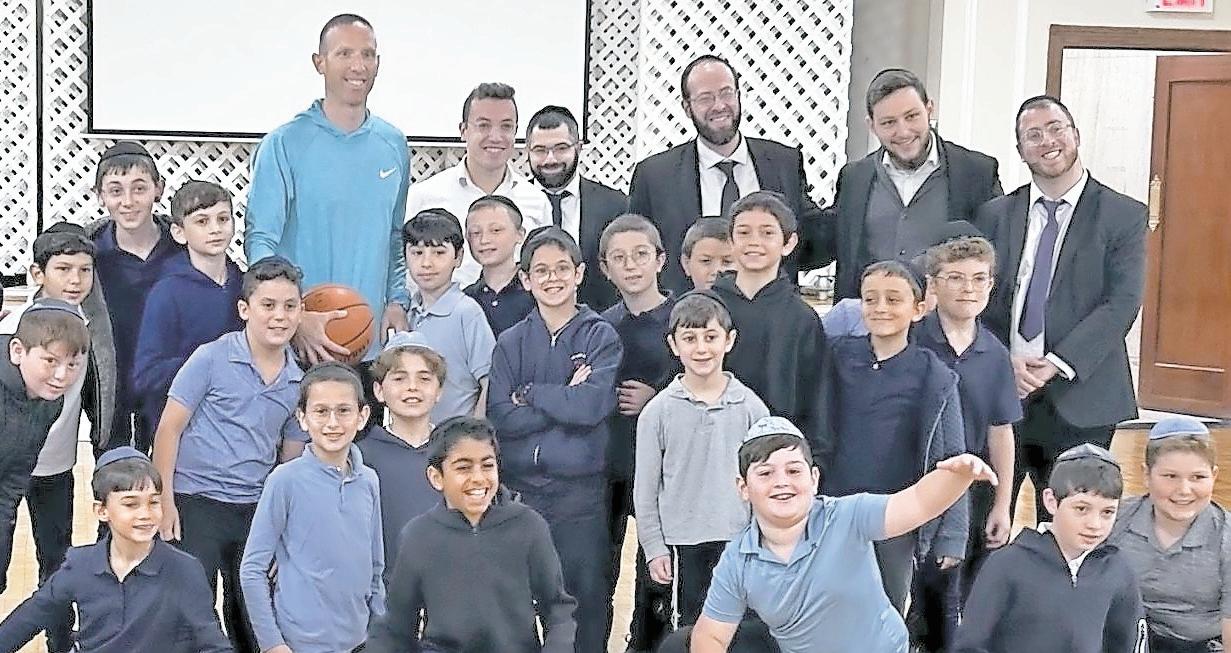
Tamir Goodman, the former world-renown basketball player, mesmerized the boys at visited the boys at TAL Academy in Queens with stories of his youth as a child with dyslexia who found his place on the basketball court, learning that his weakness in reading came with an extra sense in seeing things on the basketball court that others did not see.

His father taught him that even in our greatest successes we must remember that our talents come from Hashem, he said.
Goodman asked the boys why we daven the same tefillos every day? He explained that it is similar to the daily practice of a professional athlete that develops muscle memory allowing him to play well even under pressure in front of large crowds.
The boys were impressed when they heard that Goodman always wore his yarmulke and never played on Shabbos even if it meant not playing in important championship games.
The highlight of the morning was when Goodman played basketball with the boys, giving them pointers and letting each one practice his shots.
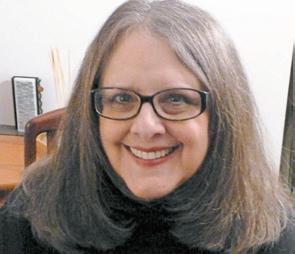
The turkey carcass is picked clean, the pecan pie is gone and now we can all look forward to the cold, dark winter ahead. Not my favorite time of year, but there is one bright light in all the cold and darkness. Actually, there are nine bright lights that warm my kitchen and add lots of fun and deliciousness to the cold months ahead.
Chanukah, just around the corner, is such a wonderful time of year. I love the candles and the singing. I love the parties and playing dreidel for pennies or chocolate candy gelt. I even love the gift giving (who does not like to receive a token of someone’s love and affection?).
And then there is the food. I love the latkes and soofganiyot and, of course, the brisket. Brisket and latkes just seem to go together so perfectly. In fact, several Jewish delis offer brisket sandwiches between two giant latkes. Might be a bit over the top, but, still, how delicious must that be?
Brisket is actually a very tough cut of meat, until you cook it “low and slow” for several hours. I have even cooked a very large brisket overnight at 250 degrees which produced meat that was so tender, it flaked apart with a fork. Delicious.
Just as I have no idea who decided latkes were the go-to dish for Chanukah, I also have no idea who decided brisket was the traditional accompaniment to those crispy latkes. All I can say is thanks for starting a delicious tradition!
Chag sameach!
Texas Rubbed Brisket (Meat)
• 2 large onions thinly sliced
• 10 to 12 garlic cloves, thinly sliced
• 1/4 cup canola oil
• 1 to 2 Tbsp. chili powder, to taste (Do not use hot chili powder)
• 1 to 2 tsp. kosher salt
• 1 Tbsp. garlic powder
• 1 Tbsp. onion powder
• 1 Tbsp. freshly ground black pepper
• 2 Tbsp. dark brown sugar
• 2 tsp. dry mustard powder
• 1/3 tsp. ginger powder
• 1 bay leaf, crushed
• 4 lbs. brisket
• 1-1/2 cups beef stock
• 1/2 cup dry red wine
Heat a large skillet and add the oil. Add the onions and sauté over medium-low heat until

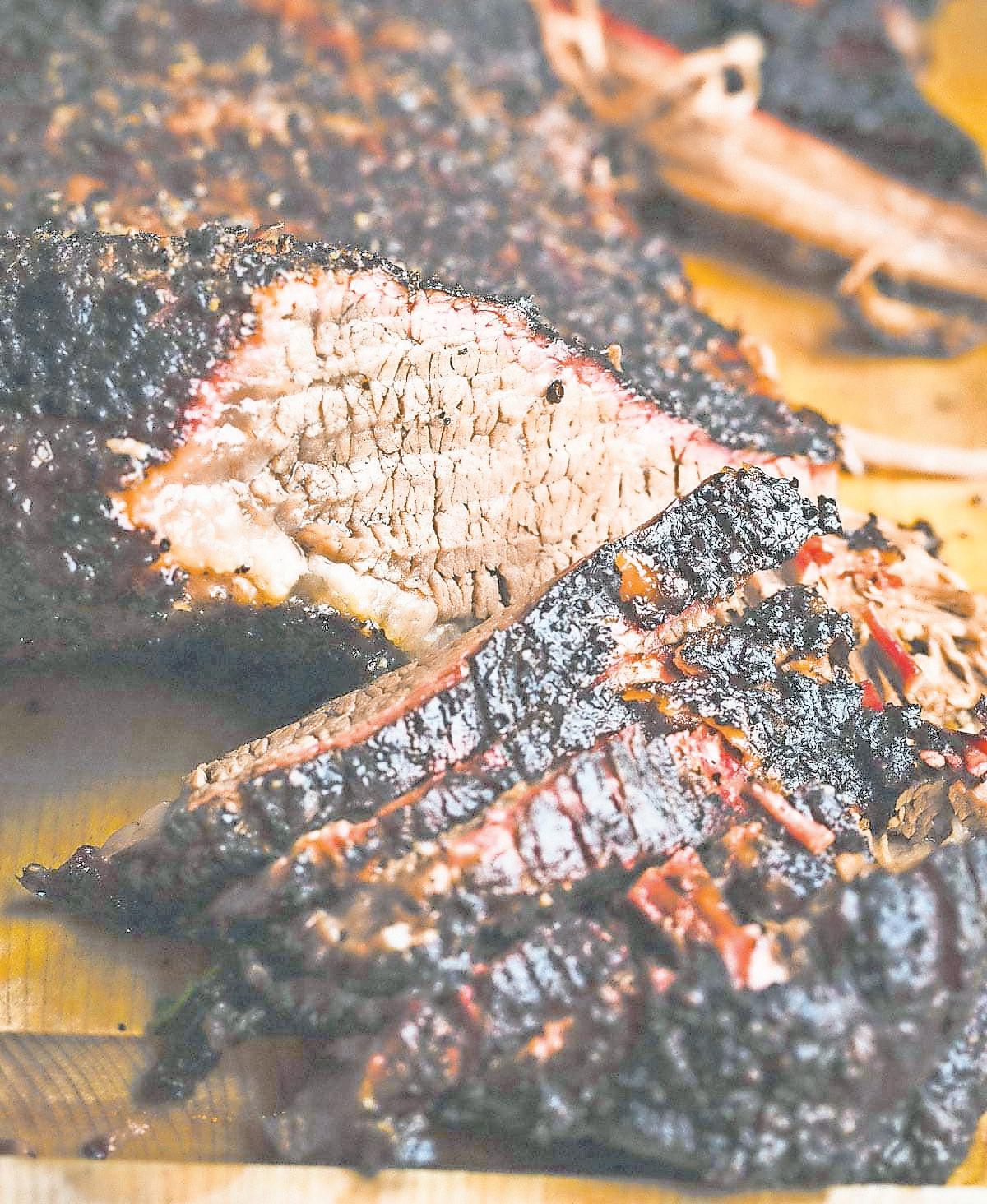
golden brown. Add the garlic and continue to cook. Adding a tablespoon of water every so often to deglaze the pan. Cook until the onions are deep brown and caramelized. Scrape into a bowl.
While the onions are cooking, mix the next nine ingredients together to form a dry rub. Set aside.
Add the brisket to the skillet and sear the meat on both sides. Place on a platter.
Add the onions and garlic to a deep roasting pan and pour the stock and wine over the onions. Push most of them to the sides of the pan leaving a thin layer on the bottom.
Rub the brisket with the dry rub and place in the roasting pan. Cover tightly with a double thickness of aluminum foil and place in a 300 degree oven for about 4 hours. If not tender, cook covered for another hour, adding a bit of water if needed. Then, uncover, turn the heat to 375 and roast for another 20 to 30 minutes, until the top is crusty and browned. Remove from the oven. Let rest for 15 minutes before cutting. Serve with the sauce.
• 2 large onions, thinly sliced
• 4 to 6 cloves garlic, minced
• 3 Tbsp. canola oil
• 1 (4 to 5 lbs.) brisket (single preferred,
but double is OK)
• 1/2 tsp. kosher salt
• 1 tsp. freshly ground black pepper
• 1 can (3 oz.) tomato paste
• 1 Tbsp. dark brown sugar
• 2 cups beef stock or broth
• 1/2 cup dry red wine, or water
• 1/3 cup ginger ale or cola
• 3 large potatoes, peeled and cut into chunks
• 4 to 6 carrots, peeled and thinly sliced
Heat a large skillet and add the oil. Add the onions and sauté until deep golden brown. Add the garlic and mix until fragrant. Remove from heat to cool.
Place the onions in the bottom of the crock pot,
Rub the meat with the salt and pepper and place over the onions. Add the potatoes and carrots.
Mix the tomato paste and sugar with the broth, soda, wine or water, and add to the crock pot.
Cook on low for 4 to 7 hours, until the meat is tender and the potatoes and carrots are cooked through. Serves 6 to 10.
This is adapted from a friend’s recipe that was a bit too spicy for me. You can add hotter or more pepper if you like it more heat. The recipe won a

food Network Sandwich contest.
• 3 to 4 lbs. double beef brisket
• Kosher Salt and Freshly ground black pepper
• 4 Tbsp. canola oil
• 6 to 8 large cloves garlic, peeled and smashed
• 1 large onion, halved and thinly sliced
• 1 Tbsp. chili powder, to taste
• 2 tsp. ground coriander, to taste
• 2 tsp. cumin, to taste
• 1/4 cup apple cider vinegar
• 1 1/2 cups water
• 1 (14-1/2 oz.) can whole tomatoes with their juices or crushed tomatoes
• 2 whole canned chipotle chiles adobo, to taste
• 4 Tbsp. molasses
Sear the meat in a large skillet. Remove to a platter when fully browned.
Add 3 tablespoons of the oil and add the onions. Cook until golden and scrape over the meat. Add the remaining oil and add the garlic, onion, chili powder, coriander, and cumin. Stir constantly until fragrant. Add the vinegar and simmer until it is almost gone. Add the water and mix well. scraping up any browned bits with a wooden or silicon spoon or spatula. Place the meat and onions in a slow cooker or in a roasting pan. Scrape the aromatic liquid over the meat and onions. Add the tomatoes, crushing them a bit with your hand and add the liquid from the can, the chipotles, and bay leaves and then drizzle the molasses over all.
Cover and cook, set on low for a slow cooker, or covered tightly in a 325-degree oven. Cook until the brisket pulls apart easily with a fork. About 8 hours in a slow cooker and about 4 to 5 in the oven, Check one or twice and add more water if needed, Serves 6+.
NOTE: This is a great pulled brisket for sandwiches for an informal brisket and latke party.
• 4 lbs. brisket
• Salt and freshly ground black pepper to taste
• 4 Tbsp. Canola oil, divided
• 5 to 7 cloves garlic, minced
• 2 large Spanish onions, cut in half and thinly sliced
• 1 Tbsp. chili powder
• 1 to 2 tsp. coriander
• 1 to 2 tsp. cumin
• Cayenne pepper, to taste
• 1/4 cup apple cider vinegar
• 3 to 4 Tbsp. (generous) blackstrap molasses
• 1 to 2 Tbsp. dark brown sugar
• 1-1/2 to 2 cups water, more if needed
• 1 can (14 oz.) diced tomatoes with liquid See At Chanukah on page 14




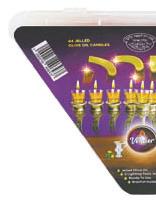















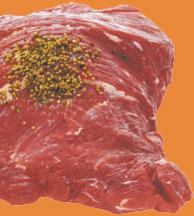



































































































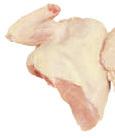
















Of course, I admitted to being Jewish and slanted my book in his direction so that he could verify that it was indeed in Hebrew. I asked him, as I typically do in such conversations, whether he was Jewish.
I can only describe his instant response by saying that he snorted. “Look, buddy,” he growled. “I’ve got my bunch of problems and burdens, but being Jewish is thankfully not one of them.”
Iwas at a loss as to what to say next, but there was something about his use of the word “thankfully” that prompted me to comment to him: “But surely you have other things to be thankful for besides not being Jewish.”
He seemed to be taken aback, having expected some defensive statement on my part, or perhaps some indication that I was offended. I was hoping that I succeeded at changing the topic from my Jewishness to his life and the things he had to be thankful for.
It worked. That is, at least for a while. He went on to say that he didn’t have much to be thankful for, although he was happily married, had several children, and held a well-paying job. He also insisted that these beneficial facets of his life were merely the result of good fortune and did not call for any expression of thanks on his part. He then pressed on with his almost obsessive interest in my Jewishness.
“You seem to be proud of the fact that you are a Jew. Why? What is it about you Jews that makes you want to wear your Jewishness on the outside? Why do you dress so differently, and why do you persist in reading those old-fashioned books in that outdated language?”
I was about to launch into a major lecture but restrained myself from doing so, knowing full well that my efforts would be in vain. As I hesitated, pondering my next move, he surprised me.
“Forget those questions,” he said. “Instead, give me an answer to the following question. It is one that I’ve asked many Jews before, but none were able to give me a satisfactory answer. My question is: What does the word ‘Jew’ mean? What is its origin, and what is its significance?”

Once again, the word “thankful” proved useful. I responded that the word “Jew” in English is related to the word “Jude” in German, which in turn derives from the Hebrew word “Judah,” one of the ancestors of the Jewish people.
I then asked him whether or not he was familiar with the Bible, particularly the Old Testament. His face, which up until this point projected hostility, suddenly took on a different aspect. His facial muscles seemed to relax at first, and then his eyes clouded over with tears.
“Are you kidding? I was the child of a preacher whose father was a preacher before him. We read from the Bible at the dinner table and studied it regularly every single day. I grew up resenting the Bible and all that it stood for, although I remember much of it against my will. I guess one can’t forget words that were ingrained in him since his childhood.”
I now had my opening. And this is the connection to this week’s Torah reading, Vayetzei.
“Then you must remember the stories of Genesis. Do you recall the passage in which Leah names her children? Do you remember
the name she gave to her fourth son?”
The words came out of his mouth as they would from a recording: “Genesis 30:35: And she conceived again and bore a son, and said, ‘This time I will praise the L-rd.’ Therefore she called his name Judah. Then she ceased bearing.”
He looked at me with a big grin, his face finally indicating a small measure of friendship. “Impressive, wouldn’t you say? I remember every word. I even remember Grandpa explaining that ‘Judah’ sounds like the Hebrew for ‘praise’.”
I responded by congratulating him for his excellent memory and further remarked that he had his old Grandpa to thank for his biblical expertise. I indicated that Leah’s reaction to her fourth child’s birth was usually translated in our tradition as, “This time I will thank the L-rd.”
“Now you have your answer. We are called Jews because of our ancestor, Judah, whose very name means to praise, or to thank. By definition, the Jew is a person who feels thankful, who expresses gratitude for all his blessings to the Almighty, who provides those blessings to
We don’t like to admit that we that we can’t ‘go at it alone.’
other humans without whose help those blessings would never be realized.”
He didn’t seem convinced. “Why then,” he pressed on, “is it so hard to feel thankful and ever so much more difficult to express it?”
Itold him that to answer that question, I would have to give him a further lesson in the Hebrew language. I explained that the word hoda’ah, the Hebrew word for thanks, is also the Hebrew word for admission or confession. I went on to explain something to him that I had learned in the writings of Rabbi Isaac Hutner, who taught that when we are thankful to another person, we are in effect admitting that we couldn’t do it alone but were dependent upon the other person for the favor.
Gratitude to G-d entails the recognition of one’s own insufficiency and the confession that without G-d, we would not have achieved that which we are grateful for.
“It is difficult to be thankful,” I concluded, “because it is difficult to admit to ourselves that alone we are inadequate and must always rely upon the Divine or the human to achieve whatever we wish to achieve in life. We don’t like to admit that we need another, that we can’t ‘go at it alone’.”
At that point, the train was fast approaching Wilmington, Delaware. My companion was about to get off. He didn’t say goodbye and certainly did not thank me for my words.
But he did give me a small bit of satisfaction. He said: “You’re different from other Jews. You actually make sense.”
I spent the rest of the train ride pondering the adequacy of my responses to this stranger and feeling thankful to the Almighty for giving me the words I needed to earn this dubious compliment.
Write: Columnist@TheJewishStar.com
Continued from page 12
• 2 chipotle chilies (canned is fine), coarsely chopped
• 3 to 4 bay leaves
• 1 to 2 Tbsp. honey
Season the meat with salt and pepper on both sides. Heat a large skillet, add half the canola oil and sear the meat on both sides, 8 to 10 minutes total time. Place the beef in a crock pot. Add the rest of the oil to the pan and add the onions. Sauté until golden. Add the garlic, chili powder, coriander and cumin. Add a pinch of cayenne pepper, to taste. Stir constantly until fragrant, about 1 minute. Slowly add the cider vinegar and boil until the liquid is reduced by three-quarters. Stir constantly to scrape up any browned bits. Add the brown sugar and molasses and mix well. Add the water to the pan. Mix until blended. Turn off the heat.
Add the tomatoes, chilies and bay leaves to the crockpot. Add the onions and liquid from the skillet. Drizzle the honey over the top, cover, and cook on low for 6 to 10 hours. Taste the sauce after 3 hours and adjust the seasonings for sweet or heat. The brisket is done when it pulls apart easily with a fork. Remove bay leaves before serving. Serves 8 to 12.
I first had this brisket in Florida when I was at a friend’s for dinner while on our honeymoon! My husband loved it and after the first Rosh Hashana for which I made it decades ago,

I have made it almost every year on Passover and/or Rosh Hashanah. I would love to make a new one, but no one will let me! So many of my kids’ friends, relatives and our friends have asked for it, that it has been made in England, Israel, Canada and several US states! And it
was once emailed to China right before Passover. I hope it becomes a family favorite for you also.
Preheat the oven to 325 degrees. Sear the meat on both sides in a large frying pan. When fully seared, place in a roaster with a tight-fitting lid, or use a half steam table aluminum pan. (I use two pans for support, as one is too flimsy.) Add the oil to the frying pan. Add the sliced onions and cook until golden. Mix in the garlic and cook for another 30 seconds. Spread the onions, over, under and around the meat. Mix the vinegar and brown sugar together in a large bowl. Add the ketchup, pepper, and wa-
and
evenly. Pour over the meat and mix with the onions a bit. Cover the pan tightly with foil and place in the oven. Cook for 4 to 7 hours or until the meat easily falls apart when pulled with a fork.
from the oven and let cool for 20 to 30 minutes. Skim off any visible fat from the top of the gravy.
Cut up the meat on a platter. Don’t cut in the aluminum pan to avoid puncturing it. I cut the meat into chunks as it is usually too soft to cut properly against the grain.
Ladle some of the sauce and onions over the meat and ladle the remainder into a bowl. Serves 6+.
Thousands of Jews of Ethiopian descent gathered at Jerusalem’s Sherover Promenade on Thursday to celebrate the community’s ancient Sigd holiday, joined by Israeli government officials and public figures.
The celebration, held annually on the 29th of the month of Cheshvan (50 days after Yom Kippur), saw thousands flock to the promenade in the Armon Hanatziv/East Talpiot neighborhood — which overlooks the Temple Mount from the south — as leaders led prayers recalling G-d’s revelation at Mount Sinai and his covenant with the Jewish people.
Former Hamas hostage Avera Mengistu, who was freed in February after 10 years and five months in the Gaza Strip, attended Sigd prayers in Jerusalem for the first time on Thursday. During the ceremony, Mengistu received a blessing from the kessim, or spiritual leaders.
Sigd, which means “prostration” in Ge’ez, or Classical Ethiopic, has been observed by Ethiopian Jews, the Beta Israel, for centuries as a day to renew their covenant with God and express their longing for Zion.
Traditionally in Ethiopia, community members would ascend a high mountain to pray, symbolizing the giving of the Torah at Mount Sinai. Now in the Jewish state, the 178,000-strong Beta Israel community continues this tradition with a focus on unity and cultural pride.

Sigd became an official Israeli holiday in 2008 and continues to serve as a bridge between Ethiopian Jewish traditions and the wider Israeli society.
“Today in Jerusalem, I joined the Ethiopian Jewish community in celebrating Sigd, a sacred day of prayer and longing for our holy city,” Israeli President Isaac Herzog tweeted. “This is the beauty of Zionism.
“For thousands of years, Ethiopian Jews dreamed of returning home to Zion. For many, this dream is now a reality,” said Israel’s head of state.
Prime Minister Benjamin Netanyahu also marked Sigd, which he called “a holiday that expresses deep faith, renewal and the enduring longing for the Land of Israel and for our capital Jerusalem,” in a statement.
“This holiday symbolizes your great dedication, which was required to preserve Jewish identity in exile, and it also marks the unity within your magnificent community and within the entire Jewish people,” he said.
The Israeli Ethiopian community totaled 177,600 people in 2024, according to data shared on Sunday by Israel’s Central Bureau of Statistics.
Of those, 93,400 (~53%) were born in Ethiopia, and 84,200 (~47%) are native-born. Over the course of 2024, 285 people immigrated to Israel from Ethiopia. —JNS

Jewish Star Torah columnists: Rabbi Benny Berlin, spiritual leader of BACH Jewish Center in Long Beach; Rabbi Avi Billet of Anshei Chesed, Boynton Beach, FL, mohel and Five Towns native; Rabbi Binny Freedman, rosh yeshiva of Orayta, Jerusalem; Dr. Alan A. Mazurek, former ZOA chair, retired neurologist, living in Great Neck, Jerusalem and Florida.
Contributing writers: Rabbi Sir Jonathan Sacks zt”l, former chief rabbi of United Hebrew Congregations of British Commonwealth; Rabbi Yossy Goldman, president South African Rabbinical Association; Rabbi Dr. Tzvi Hersh Weinreb, OU executive VP emeritus.
To submit commentary, inquire at: Editor@TheJewishStar.com. Contact our columnists at: Columnist@TheJewishStar.com.
Fri Nov 28 / 8 Kislev
Vayetzei
Five Towns candles: 4:11 • Havdalah: 5:20
Scarsdale candles: 4:10 • Havdalah: 5:14
Fri Dec 5 / 15 Kislev
Vayishlach
Five Towns candles: 4:09 • Havdalah: 5:18
Scarsdale candles: 4:08 • Havdalah: 5:13
Fri Dec 12 / 22 Kislev
Vayeshev • Shabbat Mevarchim
Five Towns candles: 4:10 • Havdalah: 5:19
Scarsdale candles: 4:09 • Havdalah: 5:13
Fri Dec 19 / 29 Kislev
Miketz • Chanukah
Five Towns candles: 4:12 • Havdalah: 5:21
Scarsdale candles: 4:11 • Havdalah: 5:16
Five Towns Candlelighting: From the White Shul, Far Rockaway, NY
Scarsdale Candlelighting: From the Young Israel of Scarsdale, Scarsdale, NY
rabbi

It is one of the great visions of the Torah. Jacob, alone at night, fleeing from the wrath of Esau, lies down to rest, and sees not a nightmare of fear but an epiphany:
In time he (Yaakov) chanced upon a certain place (vayifga bamakom) and decided to spend the night there, because the sun had set. He took some stones of the place and put them under his head, and in that place lay down to sleep. And he dreamed: He saw a ladder set upon the ground, whose top reached the heavens. On it, angels of G-d went up and came down. The L-rd stood over him. Gen. 28:11-13
Then Yaakov awoke from his sleep and said, “Truly, the L-rd is in this place — and I did not know it!” He was afraid and said, “How full of awe is this place! This is none other than the House of G-d, and this the gate of the Heavens!” Gen. 28:16-7
On the basis of this passage, the Sages said that “Jacob instituted the evening prayer.” The inference is based on the word vayifga which can mean not only, “he came to, encountered, happened upon, chanced upon” but also “he prayed, entreated, pleaded” as in Jeremiah, “Do not pray for this people, nor raise up a cry for them, and do not plead with Me (ve-al tifga bi)” (Jeremiah 7:16).
The Sages also understood the word bamakom, “the place” to mean “G-d” (the “place” of the universe). Thus Jacob completed the cycle of daily prayers. Abraham instituted shacharit, the morning prayer, Isaac initiated Mincha, the afternoon prayer, and Jacob was first to establish Arvit, also known as Maariv, the prayer of night-time.
This is a striking idea. Each of the weekday prayers bears character of one of the patriarchs.
Abraham represents morning. He is the initiator, the one who introduced a new religious consciousness to the world. With him a day begins.
Isaac represents afternoon. There is nothing new about Isaac — no major transition from darkness to light or light to darkness. Many of the incidents in Isaac’s life recapitulate those of his father. Famine forces him, as it did Abra-
G-d has been there all along, but we were too preoccupied by our own concerns to notice Him.

ham, to go to the land of the Philistines. He redigs his father’s wells.
Isaac’s is the quiet heroism of continuity. He is a link in the chain of the covenant. He joins one generation to the next. He introduces nothing new into the life of faith, but his life has its own nobility. Isaac is steadfastness, loyalty, the determination to continue.
Jacob represents night. He is the man of fear and flight, the man who wrestles with G-d, with others and with himself. Jacob is one who knows the darkness of this world.
There is, however, a difficulty with the idea that Jacob introduced the evening prayer.
In a famous episode in the Talmud, Rabbi Joshua takes the view that, unlike Shacharit or Mincha, the evening prayer is not obligatory (though, as the commentators note, it has become obligatory through the acceptance of generations of Jews). Why, if it was instituted by Jacob, was it not held to carry the same obligation as the prayers of Abraham and Isaac? Tradition offers three answers.
The first is that the view that Arvit is nonobligatory according to those who hold that our daily prayers are based not on the patriarchs but on the sacrifices that were offered in the Temple. There was a morning and afternoon offering but no evening sacrifice. The two views differ precisely on this, that for those who trace prayer to sacrifice, the evening prayer is voluntary, whereas for those who base it on the patriarchs, it is obligatory.
The second is that there is a law that those on a journey (and for three days thereafter) are exempt from prayer. In the days when journeys were hazardous — when travellers were in constant fear of attack by raiders — it was impossible to concentrate. Prayer requires concentration (kavanah). Therefore Jacob was exempt from prayer, and offered up his entreaty not as an obligation but as a voluntary act — and so it remained.
The third is that there is a tradition that, as Jacob was travelling, “the sun set suddenly” — not at its normal time. Jacob had intended to say the afternoon prayer, but found, to his surprise, that night had fallen. Arvit did not become an obligation, since Jacob had not meant to say an evening prayer at all.
There is, however, a more profound explanation. A different linguistic construction is used for each of the three occasions that the Sages saw as the basis of prayer. Abraham “rose early in the morning to the place where he had stood before G-d” (Gen. 19:27). Isaac “went out to meditate (lasuach) in the field towards evening” (Gen. 24:63). Jacob “met, encountered, came across, chanced upon” G-d (vayifga bamakom). These are different kinds of religious experience.
Abraham initiated the quest for G-d. He was a creative religious personality — the father of all those who set out on a journey of the spirit to an unknown destination, armed only with the trust that those who seek, find. Abraham sought G-d before G-d sought him.
Isaac’s prayer is described as a sichah (literally a conversation or dialogue). There are two parties to a dialogue — one who speaks, and one who listens and, having listened, responds. Isaac represents the religious experience as conversation between the word of G-d and the word of humankind.
Jacob’s prayer is very different. He does not initiate it. His thoughts are elsewhere — on Esau from whom he is escaping, and on Laban to whom he is travelling. Into this troubled mind comes a vision of G-d and the angels and a stairway connecting earth and heaven. He has done nothing to prepare for it. It is unexpected. Jacob literally “encounters” G-d as we can sometimes encounter a familiar face among a crowd of strangers. This is a meeting brought about by G-d, not man. That is why Jacob’s prayer could not be made the basis of a regular obligation. None of us knows when the presence of G-d will suddenly intrude into our lives.
There is an element of the religious life that is beyond conscious control. It comes out of nowhere, when we are least expecting it.
If Abraham represents our journey towards G-d, and Isaac our dialogue with G-d, Jacob signifies G-d’s encounter with us — unplanned, unscheduled, unexpected; the vision, the voice, the call we can never know in advance but which leaves us transformed. As for Jacob, so for us. It feels as if we are waking from a sleep and realizing, as if for the first time, that “G-d was in this place and I did not know it.” The place has not changed, but we have. Such an experience can never be made the subject of an obligation. It is not something we do. It is something that happens to us. Vayfiga bamakom means that, thinking of other things, we find that we have walked into the presence of G-d.
Such experiences take place — literally or metaphorically — at night. They happen when we are alone, afraid, vulnerable, close to despair. It is then that, when we least expect it, we can find our lives flooded by the radiance of the Divine.
Suddenly, with a certainty that is unmistakable, we know that we are not alone, that G-d is there and has been all along but that we were too preoccupied by our own concerns to notice Him. That is how Jacob found G-d — not by his own efforts, like Abraham; not through continuous dialogue, like Isaac; but in the midst of fear and isolation. Jacob, in flight, trips and falls — and finds he has fallen into the waiting arms of G-d. No one who has had this experience, ever forgets it. “Now I know that You were with me all the time, but I was looking elsewhere.”
That was Jacob’s prayer. There are times when we speak and times when we are spoken to. Prayer is not always predictable, a matter of fixed times and daily obligation. It is also an openness, a vulnerability. G-d can take us by surprise, waking us from our sleep, catching us as we fall.

This is the week the Jewish people are born. Jacob leaves home and moves to Haran to escape the murderous intentions of his twin brother Esau, and to find a wife. In the end, because of the duplicity of his uncle and father-in-law, Laban, he marries more than one wife. Leah and Rachel and their handmaids bear 11 of the 12 tribes of Israel in this week’s reading, Vayetzei. Only the youngest son, Benjamin, will be born later.
Laban is a crook and con man. Money was his god, and he was not very nice to his own daughters — never mind his son-in-law, who he cheated constantly. But somehow, through thick and thin, the girls managed. They were loving sisters who made great sacrifices for each other.
It was extraordinary then that despite their father’s wrongdoing and terrible parenting, they turned out as well as they did, going on to become the beloved matriarchs of Israel.
Sadly, today we see more and more dysfunctional parents raising dysfunctional kids. For children to turn out as Rachel and Leah did without the care and guidance of loving, nurturing parents would be considered almost impossible.
And today, we know that our children need not only love, but unconditionallove.
Iwas told by one of Israel’s respected pedagogues about a talk he heard from a Jerusalem teacher given at an educational conference some years ago.
The gentleman was teaching in a Haredi cheder in Jerusalem. Tragically, one of the students in his class had lost his mother at a young age. It didn’t take very long for his father to remarry. The boy wasn’t handling all the traumatic changes in his home life and was acting up at school. He stopped listening or participating, just laying with his head on his desk throughout lessons. Whatever the teacher tried was of no avail. The boy was either unresponsive or downright disruptive.
Frustrated and at a loss, the teacher consulted the principal. While he sympathized with the boy’s plight and his difficulties at home, he recommended that the teacher use corporal punishment, if nothing else worked.
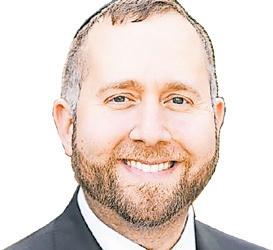
Professor Velvel Greene of the University of Minnesota was a rising star in the world of science. NASA invited him to sit on an elite panel of astrophysicists analyzing the possible effects of space travel on human life. He was a secular Jew at the time, immersed in cosmic research, studying the physics and planetary movements of the universe.
At one conference, the group discussed a faraway planet called Alpha Centauri, 4.367 light years away. If humanity ever found a way to travel there, it would take around 150,000 years for a conventional rocket to reach it. Then another 150,000 years to return to Earth. They realized that such a mission would require a full
‘I
T“Give him afrask!” he said. (In those years, it was not yet illegal.)
But this teacher could not bring himself to strike the boy physically, no matter his lack of work and interest in his studies.
So he tried something different. One day, he wrote a short note and put it on the boy’s desk. It contained two words in Hebrew: Ma shlomchah? (“How are you?”).
It took some time, but eventually, the boy saw the note and worked out that it must have come from his teacher. So he wrote back, also in two Hebrew words: Ra li (“Not good, or “Things are bad for me”). Then, the teacher responded with another two words: Ani mayvin (“I understand”).
It didn’t happen overnight, but slowly but surely, from that written exchange something shifted. The boy picked up his head, began listening, and in time, became a healthy, normal participant in class.
Many years later, the teacher was walking in the park and noticed a young couple pushing a baby carriage. At first, he
wasn’t sure, but then he recognized the young man as that very same boy who acted up in his class all those years ago.
“I’m so pleased to see that you’ve matured, married and are raising a family,” said the teacher. “How have you been managing all these years?”
“I had many difficult moments over the years,” the young man replied. “But every time I was struggling, I remembered our ‘correspondence’ all those years ago and just knowing that someone understood me helped me through.”
Whereupon the young man took his wallet out, opened it and removed three crumpled notes from his wallet.
“Ma shlomchah?” “Ra li.” “Ani mayvin.”
The teacher and student embraced.
At the conference, the teacher ended his story with these words. “Now imagine that I had followed my principal’s suggestion and just given him a slap across the face!”
Today, so many families are experiencing challenges with children. I know it isn’t easy, but one thing is clear: Unconditional love is not only the right way forward, but probably the only way forward.
Write: Columnist@TheJewishStar.com
colony of people on board, with tremendous supplies. Generations would be born and raised on that spaceship.
Imagine that in this theoretical puzzle, there were enough provisions to last. A colony of people would have to live there, raise children there, and for generations continue trying to achieve the mission of reaching Alpha Centauri. Suddenly someone asked the core question. How would these future generations not forget why they were there? After three, five, or ten generations, how would they not start believing that the purpose of life is simply to make the spaceship as comfortable as possible? They might think that the spaceship is the entire world.
How do you ensure that the mission is transmitted faithfully across many generations?
A non-Jewish scientist stood up and answered, “You have to ask the Jews. Ask the Jews how to transmit a mission from one generation to the next. Somehow, they have held onto a mission for thousands of years and not let go.”
Yaakov carried Eretz Yisrael with him.
That question, how a people holds onto its mission across impossible distances and unimaginable time, is answered in the opening word of our parsha, Vayeitzei. When the Torah describes someone leaving Eretz Yisrael, it almost always uses the word vayered (he descended). Eretz Yisrael is higher not only geographically but spiritually, the holiest place on earth. Yet when Yaakov leaves Eretz Yisrael, the Torah does not call it a descent. It tells us “vayetzei Yaakov.” Why?
Because for Yaakov, leaving was not a fall, not a spiritual drop. Yaakov carried Eretz Yisrael with him. He was sent on a mission. His father sent him to build a family. His mother sent him to escape danger. He internalized both purpos-

he title of this week’s column are the opening words of Walt Whitman’s immortal poem from his “Leaves of Grass” collection published in 1855. It celebrates the human body as a sacred and essential part of the soul, acting as the vehicle for the soul’s expression. The title also recalls of a classic 1960s episode of Rod Serling’s “The Twilight Zone” in which a young widower and his children purchase a life-like robot who acts as companion and “grandmother” to this family, attempting to fill the void of the tragic loss of the children’s young mother. A thought provoking and emotional episode (based on Ray Bradbury’s brilliant short story), it was sci-fi TV at its best.
What prompted me to think about Whitman’s classic — and its impact for us as Jews, as Zionists and as human beings — was my attendance at a funeral last week for an acquaintance I met
at morning minyan and only casually knew. He was a Holocaust survivor with a beautiful voice, fluent in multiple languages and quick with a corny Jewish joke.
In his eulogy, the rabbi said that “Abe made music part of his life. In prayer, in shiurim, even the middle of a conversation, he was always bursting into song. And song is the way our human souls communicate with one another in the halls of heaven.” This beautiful thought made me think of Whitman’s poem.
Then I started to think about the parshiyot Chayei Sarah and Toldot.
Understandably, Chayei Sarah because it is bookended with death and funerals and burials — although most of the parsha is celebratory, about finding a suitable wife for Yitzchak, the “miraculous” finding of Rivka and the subsequent meeting of Yitzchak and Rivka. (Not only that, but Avraham himself re-marries, Keturah [maybe Hagar] has more kids, and even Yitzchak and Yishmael). Rather than being a funereal tale of death, it is one of courtship, engagement, marriage and happy endings, worthy of a Hallmark Holiday Special!
The story then continues with Toldot, where
Dovid Hamelech used his harp to soothe himself and his enemies. It’s the only way.
es. He never lost sight of why he was going. Rashi understands this depth in the word vayeitzei. When a righteous person leaves a place, the glory of the place departs with that person. The kedushah was not abandoned in Eretz Yisrael — it traveled with Yaakov. Because he lived with mission, the holiness went wherever he went.
We see this throughout his years in Charan. Yaakov worked for Lavan under backbreaking conditions. He was deceived, exploited, his wages changed ten times. He endured heat by day and frost by night. Yet through every hardship, Yaakov never forgot why he was there. He built a family. He protected his integrity. He prepared to return. The mission sustained him.
This is the answer to the scientist’s question. A mission survives when it becomes not what you remember but who you are. Yaakov did not need to recall why he left. The purpose was woven into every decision, every
See Berlin on page 22
tual essence that connects us to our Creator who created us as a synthesis of spiritual and physical, with the spiritual to be the master of the physical. Unfortunately, for many the reverse is true, because Hashem has given us freedom of choice.
Rivka has difficulty conceiving and Yitzchak prays to Hashem that she become pregnant, and she does. Then the story takes a darker turn, with the revelation that she is carrying twins who will be fierce enemies. Reading like a Dickensian novel, without the happy ending we’ve come to desire, we are left to contemplate the fate of our protagonists.
What are we to make of all this? We know that all of Torah is true and is there to impart to us life lessons — these are not just “stories.” Every word, every letter, of what is said and not said is fraught with meaning and transcendent understanding, if we only take the time to discover it.
If we return to the concept of communication by music, we may have some of the answer. A Jewish understanding of a soul is the spiri-
These concepts are similar to what Whitman outlined poetically, since his Christianity received them from Judaism. But he, influenced by Greek culture and thought, glorified and celebrated the human body, its physical beauty and sensuality, while we as Jews celebrate and elevate our spiritual character, the supremacy of the soul as the guiding force in our lives and behavior.
If we look at Yitzchak, we see he was the most mysterious and spiritual of the Avot. He speaks very little — the only speech evidenced by him in the Torah prior to meeting and marrying Rivka, is when he asks his father at the akeida:“Hinei ha’aish v’haetzim, v’ayeh haseh l’ola (here are the fire and the wood, but where is the lamb for the offering)?”
The midrash expounds on the intensely spiritual nature of Yitzchak. When he was first seen
See Mazurek on page 22
Published weekly except during certain religious and civil holidays by The Jewish Star LLC New York City office: 5676 Riverdale Ave Suite 311, Bronx NY 10471 • LI office: 2 Endo Blvd, Garden City NY 11530 Here’s how to reach The Jewish Star — Write: Editor@TheJewishStar.com. Call: 516-622-7461 ext 291
Editor & Publisher: Ed Weintrob
516-622-7461 ext 291
Jewish Star Associate: Nechama Bluth
516-622-7461 ext 241
Content: The Publisher endeavors to ensure that our content is within the bounds of normative halachah and hashkafah. Anyone who feels anything we publish may be inappropriate in this regard is urged to bring the item in question to the attention of the Publisher. Advertising is accepted at the sole discretion of the Publisher and should conform to standards appropriate for distribution in an Orthodox community. Send us your news! Editor@TheJewishStar.com
Advertising: Publisher@TheJewishStar.com
Kashrut: The Jewish Star is not responsible for the

AJew digs in the arid desert soil. The earth is unyielding. He persists, striking rock and dirt, clawing at the land’s innards with his bare hands. Hostile neighbors mock his naïveté, but he believes.
The land’s ancient wrath, smoky and primeval … it whitens your lashes with salt … as you ravage it, metal again bludgeons your bones … your body weeps through aching hands, against sealed stone, against a deaf ear.
That is how the poet Nathan Alterman described the struggle to find water in the Negev, before Israel was reborn.
A man in his dream and a tree in its roots, bound in dread, petrified and stilled.
We can imagine it was the same in the days of the patriarchs, when Abraham dug and found water, and Isaac continued his father’s work. Water in the desert benefits everyone. It brings life, settlement, trade, food and agriculture. This was the old, rational “conception”: that everyone seeks prosperity, that people would rather build and flourish than fight. That peace and cooperation would prevail because they are in everyone’s best interest.
But not everyone sees it that way. Without morality and fear of G-d, ancient hatreds, tribal laws, foundational myths and desert codes easily outweigh logic. Myth trumps reason.
And all the wells that his father’s servants had dug in the time of his father Abraham, the Philistines stopped up, filling them with earth. (Genesis 26:15).
Not merely sealed, but deliberately filled with dirt to ensure no one could ever use them again. They were willing to suffer thirst and doom their region to ruin just so that the Jews would suffer.
For generations, commentators struggled to explain why the Philistines would destroy their own lifelines just to harm their enemies. But those of us who survived Oct. 7 know that such a thing is possible.
For our neighbors, the destruction of their own homes, towns and lives was worth it for a single day in which they could humiliate the Jews and unleash unimaginable cruelty upon them. The biblical Philistines vanished long ago,
kashrut of any product or establishment featured in its pages. If you have questions regarding any establishment or product, including its supervision, please consult your rabbi for guidance.
Submissions: All submissions become the property of The Jewish Star and may be edited and used by the Publisher, its licensees and affiliates, in print, on the web and/or in any media that now exists or will exist in the future in any form, including derivative works, throughout the world in perpetuity, without additional authorization or compensation. The individual or entity submitting material affirms that it holds the copyright or otherwise has the right to authorize its use in accordance with The Jewish Star’s terms for submissions.
Opinions: Views expressed by columnists and other writers do not necessarily reflect the position of the Publisher or of The Jewish Star LLC.
Distribution: The Jewish Star is available free in kosher food establishments, stores, synagogues, and curb-side newsboxes on Long Island, in New York City and elsewhere. To request free delivery to your location, write Publisher@TheJewishStar.com.
Copyright: All content is copyright and may not be republished or otherwise reproduced without written permission by The Jewish Star; to do so without permission is against the law and halacha. For content reproduction write to Publisher@TheJewishStar.com.
The Jewish Star subscribes to JNS. It, or its contributors, own the copyrights on material attributed to them. The length and content of JNS material and all other submitted material may be edited by The Jewish Star.
Member: American Jewish Press Association.
This newspaper contains words of Torah. While it is not considered shaimos, please dispose properly.
Mitchell Bard, foreign policy analyst, authority on USIsreal relations; Ben Cohen, senior analyst, Foundation for Defense of Democracies; Stephen Flatow, president, Religious Zionists of America-Mizrachi and father of Alisa Flatow, murdered in an Iranian-sponsored Palestinian terrorist attack in 1995; Yisrael Medad, Americanborn Israeli journalist and political commentator; Rafael Medoff, founding director of David S. Wyman Institute for Holocaust Studies; Fiamma Nirenstein, Italian-Israeli journalist, author of 13 books, leading voice on Israeli affairs, Middle Eastern politics and antisemitism; Melanie Phillips, British journalist; Moshe Phillips, national chairman, Americans for a Safe Israel; Thane Rosenbaum, Distinguished University Professor at Touro University (published by Jewish Journal); Jonathan S. Tobin, editor-in-chief, Jewish News Syndicate.

but new invaders have taken their place, from the Philistines to the Palestinians of our time.
Why? The Bible offers a succinct answer:
And the Philistines envied him. (Genesis 26:14).
Isaac told Abimelech the truth: “You hate me.”
They couldn’t bear the success of this Hebrew man, who had received the same barren land as they had, but unlike them had turned it into a thriving, prosperous region with a strong economy, blooming communities, and a cultural, spiritual and technological message for the entire region.
And Isaac sowed in that land, and in that year reaped a hundredfold — and the Lord blessed him. And the man became rich, and he grew richer and richer until he was very wealthy. And he had flocks, herds and many enterprises. (Genesis 26:12).
Look around at Israel’s neighboring states, and you will understand the root of the hatred.
Now that they have failed to destroy us, they are trying to do the same to Europe — the continent that expelled and murdered its Jews. Israel stands at the frontline of Western civilization. In fighting the invaders, we are also defending those in Europe who have chosen to collaborate with the Muslim Brotherhood, which seeks their destruction. What a disgrace.
When Abimelech said to Isaac, “Move away from us, for you have become too powerful for us,” it wasn’t just his economic success that bothered them — worse, he had grown strong from within their midst. His wealth, they claimed, came from them.
In reality, as the Torah tells it, Isaac succeeded through his own talents and hard work. He sowed and reaped, dug and found water. He did not grow rich by exploiting others, but by
contributing to them. His success only served to highlight his neighbors’ failures, and what could they tell their own people, who were responsible for their own poverty? The familiar antisemitic formula of blaming Jews for others’ failures began back then.
The 19th-century Torah commentator Rabbi Naftali Zvi Yehuda Berlin (the Netziv) wrote: “Scripture tells us this is what happens in exile — they will fence us out from settling in all parts of the land.”
Isaac’s son Jacob experienced the same pattern. He arrived at his uncle Laban’s small farm and turned it into an empire within 20 years. Even Laban admitted: “The Lord has blessed me because of you.” But this did not earn gratitude — only continued deceit.
And when Jacob became wealthy — not at Laban’s expense, but together with him — he heard Laban’s sons say what Jew-haters have said throughout the ages: “Jacob has taken all that was our father’s, and from what was our father’s he has gained all this wealth.”
This is a historical formula we know all too well.
Jews settle, contribute to the local economy, culture, ethics and governance. They sometimes enter politics and help the place thrive. Then, when they succeed, they are accused of exploiting the land and enriching themselves at the expense of the “native” population.
The next stage is always the same: riots, destruction, exile. It makes no difference that Jews lived in those places long before their so-called “indigenous” populations: in Spain for a thousand years until the expulsion in 1492; in Italy for 2,200 years until deportation to the death camps in 1943; in Iraq for some 2,500 years until the 1941 Farhud pogrom — and so on.
And yet we never gave up on the world. Even after being expelled, even after being herded into gas chambers, we sought to repair and improve humanity. We do not give up even now, despite the hypocrisy of Europe, Australia, Canada and other countries that have capitulated to terror and incitement by the Muslim Brotherhood and its supporters, turning their backs on the Jewish people and its state in the hope of quieting the riots on their streets.
Jews have always been the canary in the coal mine for civilizational collapse. Hatred begins with the Jews, spreads to other minorities, and ultimately consumes the societies that harbor it.

No doubt, the passage of UN Security Council Resolution 2803 on the postwar reconstruction of Gaza was a triumph for American diplomacy. Drafted by the United States and eagerly endorsed by a host of Middle Eastern and Islamic nations on Nov. 17 — among them Qatar and Turkey, two of Israel’s most insidious adversaries — the resolution garnered 13 of the 15 votes on the council. Russia and China, two of the five permanent members with the power of veto, decided not to oppose the resolution, meekly abstaining instead.
However, the diplomatic obstacles to securing the resolution’s passage pale in comparison with the political and strategic obstacles confronting its implementation.
In post-conflict situations where outside forces are deployed to ensure stability, a distinction between peacekeeping and peace enforcement has traditionally been made. “Blue Helmet” operations deployed by the United Nations are either governed by Chapter VI of the UN Charter, which restricts these missions to monitoring, mediating and negotiating duties among the belligerent parties, or Chapter VII, which allows for the use of force in applying the mandate.
From what I can tell, the International Stabilization Force (ISF) for Gaza proposed by Reso-
The world is on the cusp of making the same mistake with Hamas that it did with Hezbollah in Lebanon after war in 2006.
lution 2803 is more Chapter VII than Chapter VI. Additionally, while the ISF has the authorization of the Security Council, it will not be managed by the UN’s peacekeeping department in New York. In that light, the ISF looks broadly similar to KFOR, the NATO-led peacekeeping force established in Kosovo following the defeat of the Serbian regime in 1999, whose legal status was also enshrined by a Security Council resolution. KFOR, however, came into being following a sustained NATO bombing campaign against Serbia to curb the brutal ethnic cleansing of the Albanian majority in Kosovo. Eight days after KFOR boots landed on the ground, the Serbs had withdrawn from Kosovo entirely. In the Gaza Strip, however, Hamas has only become more entrenched since the ceasefire was announced in mid-October.
Under the terms of the ceasefire, Hamas is meant to disarm. The terror group has no intention of doing so. Right after Resolution 2803 was passed, a Hamas statement asserted that the ISF’s ostensible duties, “including disarming the resistance, strips it of its neutrality and turns it into a party to the conflict in favor of the occupation.”
Even with a mandate that allows for enforcement, it is very difficult to envisage ISF troops — many of whom will be drawn from Muslim countries with established records of support for the Palestinian cause — clashing with Hamas terrorists in a bid to disarm them. Indeed, an aversion to peace enforcement is a key reason why both Jordan and the United Arab Emirates have ruled out the participation of their troops. They are wary, perhaps understandably, of being perceived as doing the dirty work of the Israelis, and they are determined not to risk the lives of their soldiers in that regard.
If the ISF is deployed without a verifiable commitment from Hamas to disarm, then the correct comparison is not with KFOR, but UNIFIL (UN Interim Force in Lebanon) — the 10,000-strong peacekeeping force deployed in Southern Lebanon following the 2006 war between Hezbollah and Israel. Just as in Gaza,
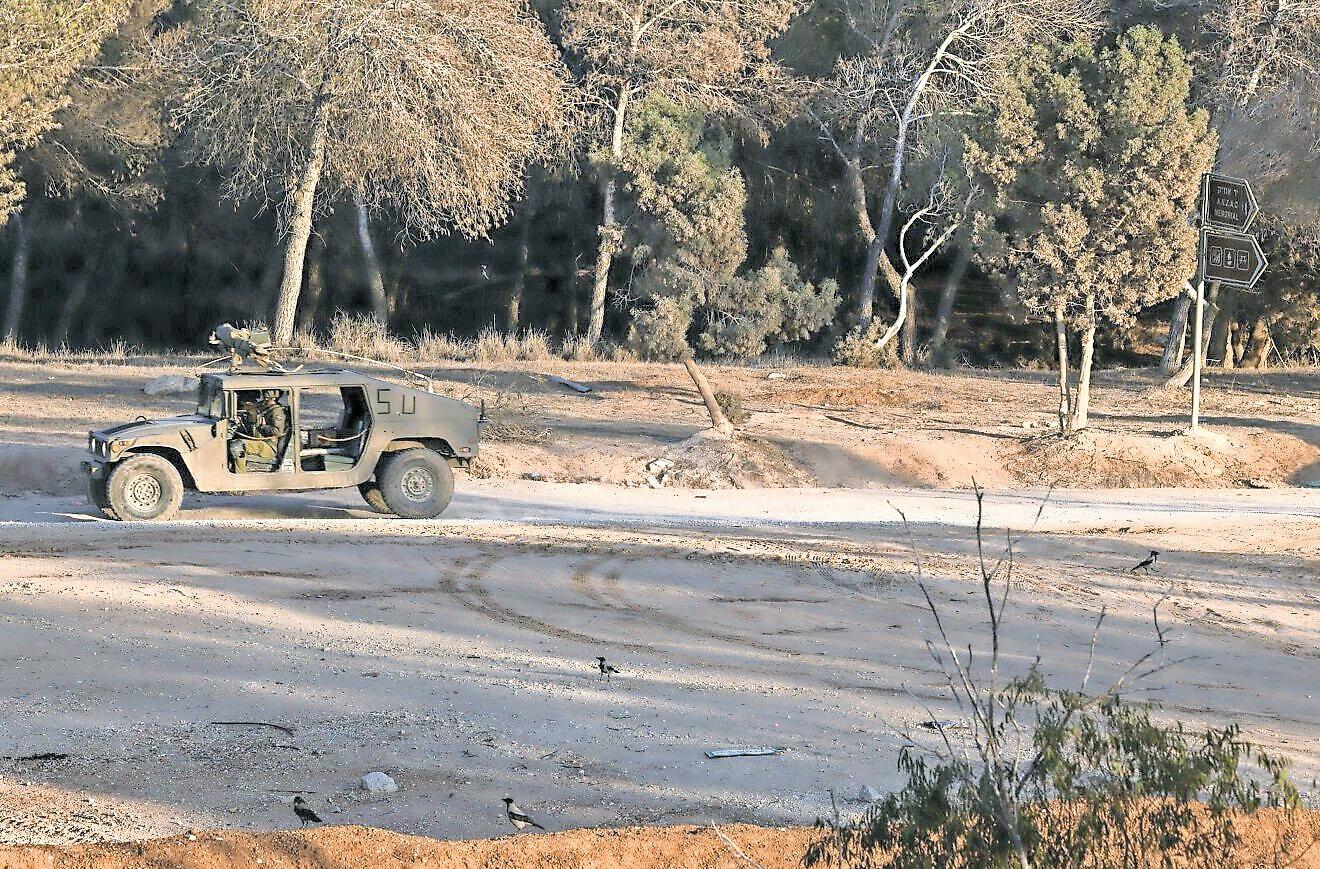
in Lebanon, there was a clear demand on Hezbollah to give up its weapons as instructed by Resolution 1701 of the Security Council. But no outside party was willing to follow through with force, if necessary, to achieve this outcome, and so UNIFIL was deployed while Hezbollah remained armed to the teeth.
The world is on the cusp of making the same mistake with Hamas in Gaza. And the victim of that error will be Israel, which will have to factor in the presence of thousands of foreign troops whenever the Israel Defense Forces is compelled to respond militarily to Hamas provocations.
If ISF troops end up as collateral damage in an Israeli strike, the follow-on script pretty much writes itself; handwringing over supposed Israeli brutality, condemnations at the United Nations and other world forums of alleged Israeli ceasefire violations, attempts by pro-Palestinian legislators to impose or reimpose military and com-
mercial embargos on Israel, and so on. Those outcomes, which are predictable, may also be overshadowed by far less predictable tensions between Jerusalem and Washington. While the United States shares the Israeli goal of defanging Hamas, it is also deeply wedded to the idea of the ISF and mindful of the need to keep its Arab allies on side.
Israel was therefore correct to welcome the passage of Resolution 2803, if only for the sake of maintaining good relations with Washington. It must also cooperate with the ISF for the same reason. But none of that means that Israel can’t demand certain guarantees, especially as the reconstruction of Gaza envisaged by the United States cannot proceed without Israeli consent.
One demand Israel can reasonably make is that all countries providing troops to the ISF should either have full diplomatic re-
Cohen on page 22
Analysis by Orna Mizahi
Institute for National Security Studies
Since Israel and Lebanon reached a ceasefire one year ago this week, Hezbollah has wrestled with a difficult question: how to respond to the relentless, daily strikes by the Israel Defense Forces that have taken a heavy toll.
Over the year, approximately 350 of its operatives have been assassinated (following the loss of about 4,500 operatives during the war), and its weapons stockpiles, manufacturing plants, warehouses, and infrastructure have been damaged. Hezbollah is currently making a major effort to rebuild these assets.
The assassination of the organization’s de facto chief of staff, Haytham ‘Ali Tabataba’i — an accomplished officer appointed after most of the organization’s veteran military guard was decapitated — intensifies the internal debate within Hezbollah and could force a change in its policy of strategic restraint.
Up to this point, Hezbollah’s strategic decision has been to avoid skirmishing with Israel, claiming that confronting Israel is the Lebanese state’s responsibility, and prioritizing its own reconstruction. The organization has demonstrated strategic patience.
Concurrently with the IDF attacks over the past year, it has acted determinedly by reorganizing its arrays, collecting and attempting to upgrade the weapons that survived the war, and finding alternative routes to smuggle in new weapons and funds to increase its power. Its operatives have operated discreetly and kept a low profile. They maintain a radical reli-
gious ideology, driven by hatred for Israel and the determination to restore the organization to its former position as a threat to Israel’s residents and a strong deterrent against the IDF.
While Israel’s military superiority is a primary factor restraining the organization, it’s not the only reason for Hezbollah’s restraint.
Following its wartime defeat, Hezbollah’s prominent standing within the Lebanese political system also diminished. Despite still being the country’s strongest military force, it must consider domestic opponents who accuse Hezbollah of severely harming Lebanon (contradicting its claim of being “Lebanon’s defender”) by fighting Israel to serve the foreign interests of Iran and the Palestinians.
The disarmament of Hezbollah is the primary issue currently on the agenda of the new Lebanese leadership, led by President Joseph Aoun and Prime Minister Nawaf Salam. However, the killing of Tabataba’i, along with four other Hezbollah operatives in the heart of the Dahiyeh area in Beirut, is pressuring the organization to execute a military response rather than limit itself to threats.
Hezbollah has a wide range of options, and it still possesses the capability to act. It retains military capabilities from the war, supplemented by additional weapons it has managed to smuggle in and develop over the past year, with direct assistance from Iran. Iran increased its influence over the organization following the assassination of Nasrallah and is committed to supporting its rearmament in every way possible.
US diplomatic officials indicate that Iran
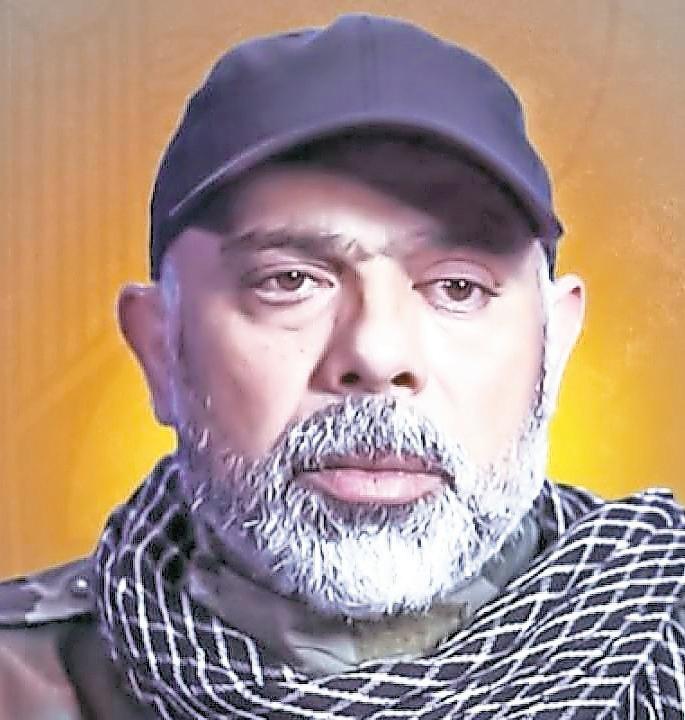
transferred approximately $1 billion to Hezbollah for reconstruction purposes in the past year alone. Despite this support, it is unlikely that Tehran, preoccupied with its own internal issues and efforts to find an acceptable solution with the international community concerning its nuclear interests, would now push the battered Hezbollah into an adventure against Israel.
Nonetheless, the organization could adopt a broad set of options for a possible response against Israeli targets. These potential actions include •attacking IDF forces in the five locations it still controls within Lebanon
•firing on northern communities or infiltrating a cell into Israel
•launching deeper missile fire aimed at the Israeli home front, or •carrying out a terror operation against Israeli targets abroad by Hezbollah itself or its partners in the axis, such as Palestinian operatives in Lebanon, the Houthis in Yemen, and the Shiite militias in Iraq.
Israel should also account for the possibility of an operation by rogue elements within Hezbollah that might disregard a decision to continue exercising restraint.
Considering its current difficult state, it’s probable that the official Hezbollah, led by the new Secretary-General Naim Qassem (who lacks significant respect) will seek to avoid another wide-ranging round of fighting with Israel, especially since Israel has already threatened a disproportionate response. The organization will likely choose to postpone its response or, due to internal pressure, settle for a limited, symbolic action along the border or overseas, while continuing its efforts to increase its power in anticipation of the next campaign.
While challenge for the IDF therefore remains, residents of the north can rest assured: the army has the upper hand this time and is prepared for any scenario.
Orna Mizrahi, a senior researcher at the Institute for National Security Studies, joined INSS in December 2018, after a long career in the Israeli security establishment.
This article was published in Israel Hayom. Write: Columnist@TheJewishStar.com

It’s been three weeks since Hurricane Melissa battered my home island of Jamaica. The Category 5 storm took the lives of more than 50 people and caused losses estimated at $8 billion, nearly half of Jamaica’s gross domestic product.
Montego Bay, the hub of tourism in Jamaica and the city where the Chabad House is located, was hit particularly hard. In certain regions, 90% of homes have no roof, certain villages are nothing more than piles of wood, and tens of thousands still remain without homes and are completely reliant on aid from NGOs.
The storm, which delivered record-breaking winds exceeding 200 miles per hour, severely affected the Chabad House, causing nearly $1 million in damage. Even a month later, we still haven’t gotten back electricity or running water and are using a generator to provide the most basic functionalities.
However, despite the chaos and devastation the hurricane brought, the first thought that my wife, Mushkee, and I had when we emerged from the terrifying experience was “Where do we start? Who needs us first?”
Specifically, I recalled a teaching of the
When you face obstacles, don’t give up. Keep digging in.
Lubavitcher Rebbe as relayed by the late Rabbi Jonathan Sacks: “A Jew does not find himself in a situation. A Jew puts himself in a situation.”
In other words, we are not trapped by our circumstances. We transform them.
That is why Chabad mobilized our supporters around the world to arrange donations of clothing, food, medicine and essential supplies, and coordinate private planes to deliver the aid and get it to the people who need it most.
Last week, at the annual International Conference of Chabad-Lubavitch Emissaries (Kinus Hashluchim) in New York City, I spoke about how our experience in Jamaica echoes that of our forefather Isaac.
The Torah portion discusses Isaac’s ordeals digging wells to find water. After building one well, his enemies destroyed it. He dug a second well, which his enemies fought with him over. He ultimately dug a third well called Rehovot, meaning “expansiveness,” bringing life and hydration to the area.
The Torah’s lesson here is clear: When you face obstacles, don’t give up. Keep digging in.
As a place with only a few hundred Jews and with extremely limited options for kosher food, practically no Jewish infrastructure and many difficulties associated with living on an island, some people wonder why Chabad came to Jamaica in the first place.
My answer is simple. Because we have a mission.
One of the 12 pesukim the Rebbe instructed every Jewish child to memorize is Yagati U’Matzasi Ta’amin. This powerful phrase roughly translates to “when you put in the effort, you will have success.” But it’s deeper than that. It means that if you have a mission, you can never give up until you succeed.
And in those moments, we can’t think about
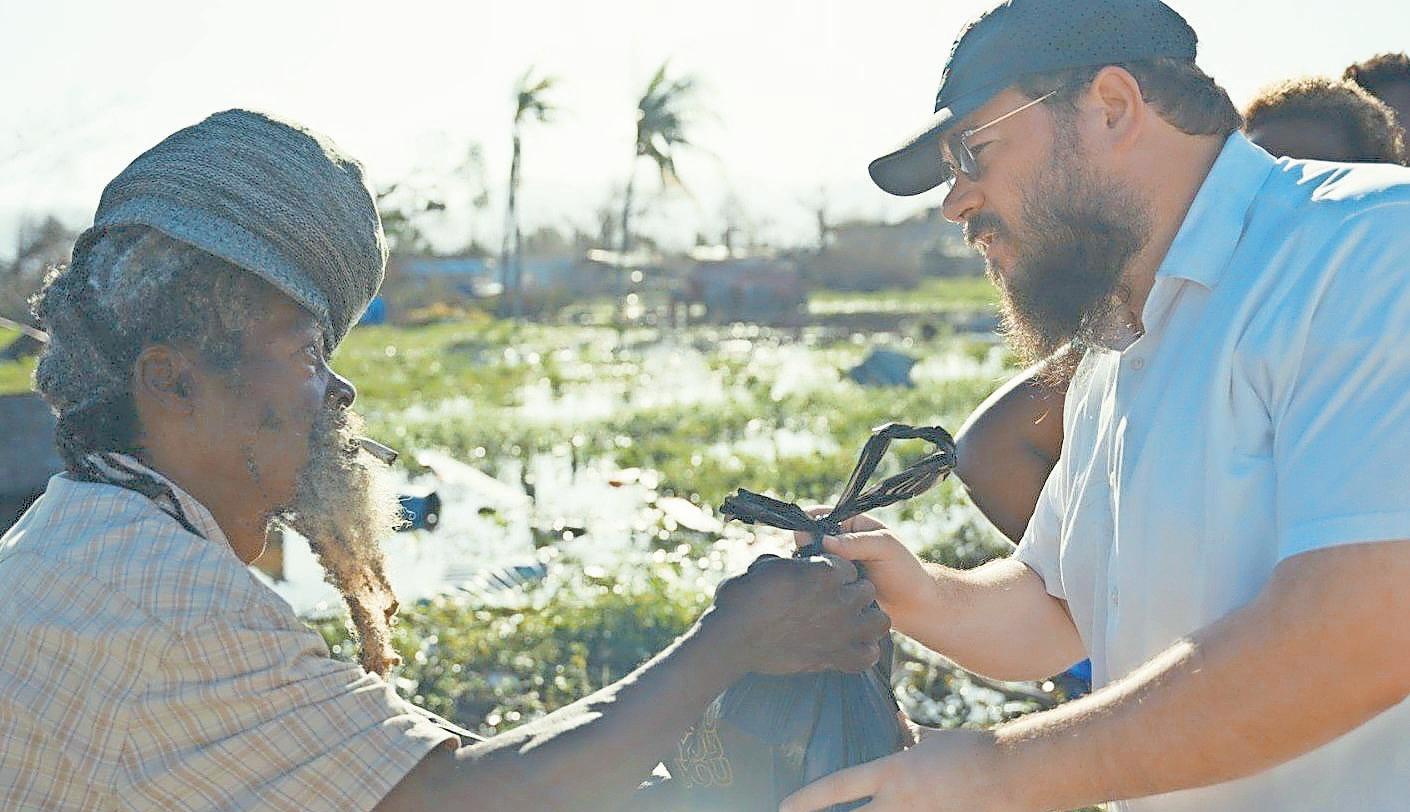
whether or not we are able to help people in need. We know that because we have a mission, we must complete it.
The Rebbe once shared that the secret to effectively carrying out one’s mission is to embody both fire and water.
Fire is the burning conviction that goodness and kindness will triumph — the holy audacity to believe we can make a difference when logic suggests otherwise. Water is the flow of compassion that nurtures, brings comfort and sustains life. It is this delicate balance that ensures that the mission is accomplished, but it is also done with care and sensitivity.
The deeper message of the Isaac story is that he wasn’t just digging for water. His wells repre-
sented the mission of the Jewish people, which is digging to uncover the hidden spark in every soul, the potential for goodness buried beneath even the most difficult situation. Every act of kindness, every mitzvah performed against the odds, every person reached in a place where Jewish life seemed impossible are like shovels digging to uncover water buried deep within the earth.
If we have learned anything from this hurricane, it’s that we don’t wait for light. We bring it. We don’t wait for hope. We create it. And when given a mission, you continue until the mission is complete.
Rabbi Yaakov Raskin has been the Chabad emissary to Jamaica since 2014.
Write: Columnist@TheJewishStar.com

With Ahmed al-Sharaa, the new president of Syria, having met this month with President Donald Trump, it is a remarkable turnaround for a man who just a few weeks ago was internationally labeled a designated terrorist.
Almost a year after the fall of the long-time regime of Bashar Assad, Syria stands at a threshold of pivoting to stability.
Much of that confidence is the result of the work of several American Jewish leaders — led by Rabbi Yusuf Hamra, head of the Jewish Heritage in Syria Foundation and a leader of the Syrian Jewish community in Brooklyn; and Rabbi Abraham Cooper, associate dean and director of global social action at the Simon Wiesenthal Center in Los Angeles.
The main focus of the rabbis and other prominent Jewish groups has been to uplift Syria economically and socially, rather than advocate politically for one party or the other. In these remarkable times, where hatred toward Jews seems to be at an all-time high, it’s a testament to the goodwill of both Sephardic and Ashkenazi rabbinical leadership to help the people of Syria, despite the usual antisemitic innuendoes thrown at the intentions of such actions.
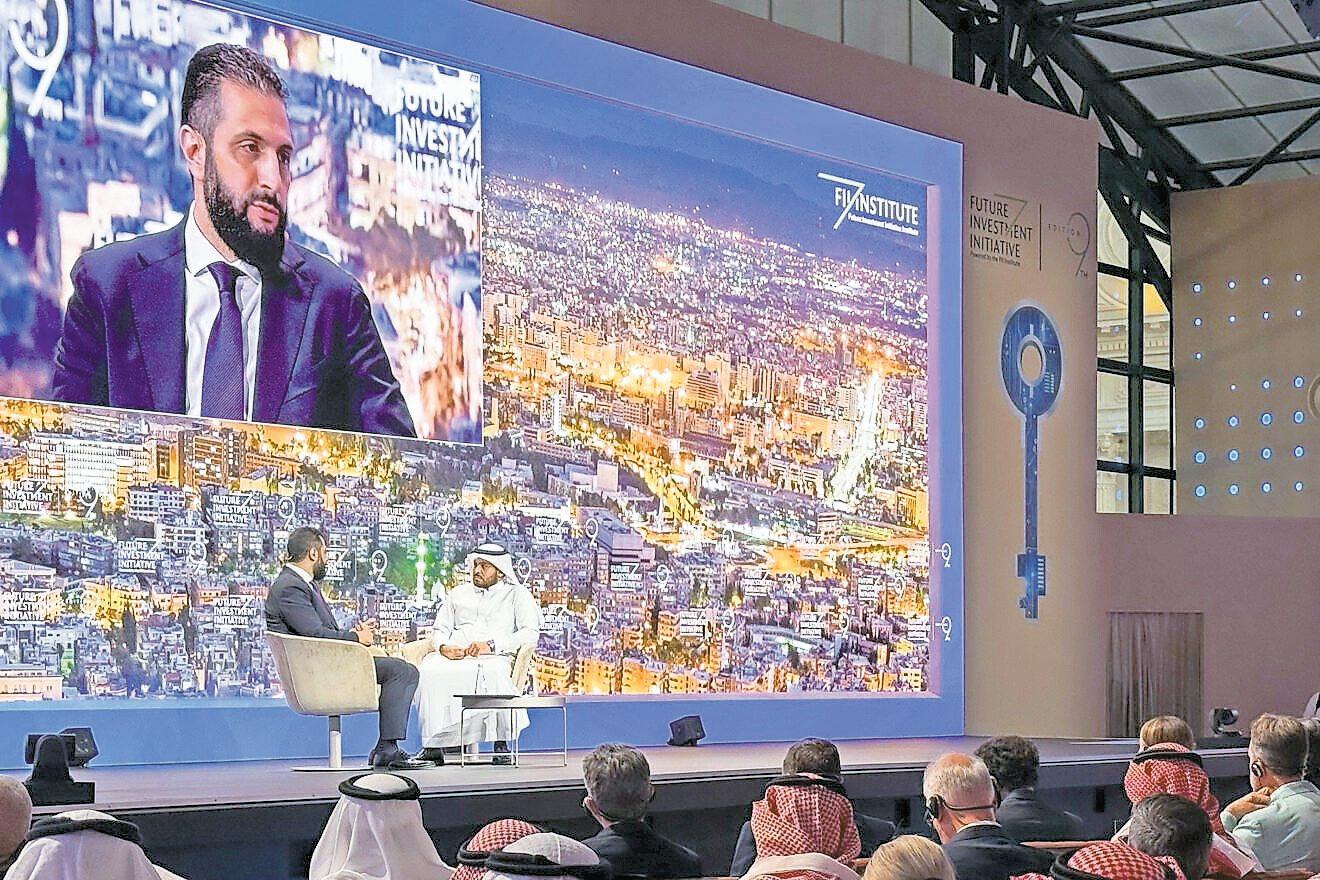
There is uncertainty regarding the new government’s ability to rein in the various terrorist militias that have carried out massacres against the Druze and Alawites, as well as routine killings and bombings against Christians. While Damascus genuinely remains peaceful and open for business, where all communities dare to believe in a shared open future, the coastal communities toward the northwest and the holy mountains of Jabal al Druze toward the south are less certain.
Since the political overthrow in December 2024, the work of Rabbis Hamra and Cooper has gone a long way in pacifying fears and developing an all-inclusive coalition to
make Syria more cohesive on a human level to rebuild shattered communities. Of course, the psychological scarring from 15 years of civil war will be much harder to recover from than the physical ruins littered all over the country.
I’ve written before about the history and significance of the Jews from greater Syria and how they hold the key not just to cities in Aleppo and Damascus, but to the wider Middle East, due to a historical connectivity that stretches from Abu Dhabi and New Delhi all the way to Mexico City and Buenos Aires.
Beyond just Syrian Jews, there has been a great deal of engagement between various Syrian governments with non-Syrian Jews as well.
These include the famed back channels between former US Secretary of State Henry Kissinger and former Syrian President Hafez Assad (Bashar Assad’s father), to the younger Assad’s meetings with Malcolm Hoenlein, former executive vice chairman of the Conference of Presidents of Major American Jewish Organizations, and former Argentinian Foreign Minister Héctor Timerman.
The various Jews of non-Sephardic backgrounds, whether foreign officials from Latin America or more local communal leaders, had always found Syria welcoming as it looked to overcome its traumatic past in the years after the expulsion of Jews after the establishment of the modern-day State of Israel in 1948.
As Syria looks to move away from its authoritarian past, it can be argued that, aside from Israel, the new Syria right now is perhaps the least antisemitic country in the Middle East. More than half a dozen high-profile Jewish delegations have visited to explore business opportunities and revive damaged synagogues, and to invest in cultural and social activity beyond what is of interest to Syrian Jews.
Rabbi Cooper has been one of the biggest proponents of engaging with the new Syrian leadership, long before anyone else dared. Alongside American evangelical leader and businessman Rev. Johnnie Moore Jr., he visited Damascus earlier this year. They also spoke with faith-based leaders from throughout the country and asked difficult questions of the new president. The rabbi was mindful to respect and not preach.
I have witnessed firsthand how he has met Syrians in multiple countries in confidence, sharing their views with all sides, which remain uneasy about the new leadership and its true intentions. He also conveyed directly to Trump the importance of timing and how the United States should, out of goodwill, stand by Syria’s side as it overcomes trauma.
Coach

Raphael Lemkin coined the word “genocide”
to describe what the world had just witnessed: the deliberate, systematic destruction of the Jewish people during the Holocaust. He spent the rest of his life fighting to ensure that humanity would recognize — and prevent — such crimes in the future.
But today, the meaning of his name and his life’s work is being twisted beyond recognition. And his family is right to push back.
The current controversy began when a nonprofit issued an “Active Genocide Alert” on Oct. 13, 2023 — just six days after Hamas carried out the worst massacre of Jews since the Holocaust. Even before Israel launched any ground operation in Gaza, before facts could be understood or verified, the organization declared that Israel was “effectively committing genocide.”
To accuse the Jewish state of genocide while Jewish families were still burying their dead was not merely premature. It was obscene.
Worse, the group invoked the name “Lemkin” — turning the legacy of the man who fought to memorialize the Holocaust into a cudgel against the Jewish people. This is not a matter of seman-
The misuse of his name is a fight over historical truth and moral clarity.

tics. It is a moral inversion, the kind that corrodes public discourse and weaponizes history.
The reckless use of the word “genocide” does more than slander Israel. It undermines the very tool Lemkin created to prevent future atrocities. When everything is genocide, nothing is. When the term is ripped from its historical roots and hurled as a political slogan, real victims lose protection and real perpetrators escape scrutiny.
And when the name “Lemkin” — a name born of Holocaust memory — is used to accuse the Jewish state days after Jews were slaughtered in their homes, it is not simply misguided. It is an assault on historical truth.
Raphael Lemkin’s nephew, Joseph Lemkin, a New Jersey attorney, has now asked Pennsylvania officials to review the organiza-
tion’s registration and use of the name “Lemkin.”
His message is simple and devastating: “My uncle coined the word ‘genocide’ to describe what was done to the Jewish people, not to accuse Israel of committing it.”
Using his uncle’s name to brand Israel as genocidal “turns history upside down,” he says. And he’s right.
Several respected American rabbis, including Rabbi Marvin Hier, dean and founder of the Simon Wiesenthal Center, and Rabbis Aryeh Ralbag, Yitzchak Lasry and Tal Peretz, have joined the effort. They submitted letters urging Pennsylvania officials to stop the misuse of the Lemkin name.
Their message mirrors that of the family: Invoking “Lemkin” to accuse Israel of genocide is historically inaccurate, morally perverse and a betrayal of the memory of the Holocaust.
Holocaust remembrance is not a political accessory. It is not a rhetorical device. It is not a hammer for activists seeking to reverse victim and perpetrator.
It carries weight. It carries pain. And it carries responsibility.
This debate is not about trademarks or paperwork. It is about the fragility of truth in a world where propaganda spreads faster than facts and where antisemitism adapts to whatever ideological language is fashionable.
The misuse of “genocide” and of the Lemkin name occurs in the same moral fog that allowed so many universities, media outlets and activists to equivocate after Oct. 7. The same fog that produced statements mourning “all sides” days after Jews were burned alive. The same fog that treats Hamas’s massacre as “context,” while treating Israel’s self-defense as “genocide.”
This inversion is not accidental. It reflects a
deeper sickness in the West: the ease with which people adopt slogans without understanding them and the eagerness with which some repurpose Jewish suffering to indict the Jewish state.
Raphael Lemkin’s work was grounded in clarity: Clarity about evil, clarity about intent and clarity about the deliberate destruction of a people because of who they are.
To take his name and attach it to a false accusation against the world’s only Jewish state is an act of historical vandalism. It weakens the ability to identify real genocide, and it trivializes the memory of those who perished in the Holocaust — the very crime that Lemkin sought to define so the world could never again pretend not to recognize it.
Joseph Lemkin thanked the rabbis for stepping up: “Their voices carry Holocaust memory and moral clarity. The ‘Lemkin’ name should never be turned against the Jewish people.”
This should not be a controversial statement. But in today’s climate, even the obvious must be defended. Because words shape narratives. Narratives shape morality. And morality shapes whether societies stand with truth or surrender to distortion.
Protecting the meaning of “genocide” is not just about the past. It is about the future. It is about ensuring that the tools created to stop mass atrocities are not hollowed out by activists eager for rhetorical shock value. It is about ensuring that the legacy of a man who sought to protect the Jewish people is not turned into a weapon against them. And fundamentally, it is about insisting that even in an age of ideological chaos, truth still matters.
Maimon Miller was a rabbi at the Edmond J. Safra Synagogue in Manhattan and at Aish San Diego. He is currently a transformational life coach.
Write: Columnist@TheJewishStar.com
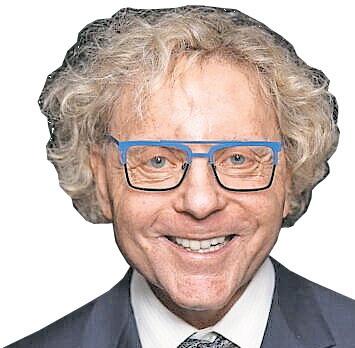
It’s that time of year again: Christmas trees and Chanukah menorahs; tinsel and dreidels; plum puddings and potato latkes; Christmas caroling and Adam Sandler’s Chanukah song — and, of course, everyone’s favorite holiday cheer: Muslims proving once again that “Peace on Earth and goodwill toward Men” is a Judeo-Christian tradition that they want no part of.
Over the past few weeks, Islamists in Nigeria destroyed 100 churches and killed and kidnapped nearly 300 Christians, many being children. Combine that with the arson and vandalism of over 1,000 churches in France, 150 in the United Kingdom, 68 in Canada, and 60 in Germany. A year ago, an Islamist mob torched a Christmas tree in Damascus, Syria after firing bullets inside a church. The tree was meant as a gesture of interfaith solidarity.
Germany and France are preparing for the seasonal Muslim ritual of ramming cars and firing weapons into — and planting bombs inside — Christmas markets. This has happened over the past few years in European cities such as Magdeburg (five killed, including a nineyear old), Trier (five dead, including a nineweek-old), Nantes (10 killed), Strasbourg, Dijon, Potsdam and Berlin, where a truck slammed into a Christmas market in 2016. The
I’ll take Scrooge and the Grinch over Muhammad’s anti-Christmas humbug.
giddy driver, high not on eggnog but some hadith, could be heard screaming, “Allahu Akbar” upon impact.
’Tis the season to be jihadi. I’ll take Scrooge and the Grinch any day over Muhammad’s anti-Christmas humbug.
And let’s not forget the New Year’s Eve surprise white women in Germany, Finland, Sweden and Austria received in 2016 when approximately 1,200 were sexually assaulted by Muslim men who believed the Koran gave them permission.
Europeans are fed up, as they should be.
Americans are still mostly unmindful of the edicts compelling Muslims to reject interfaith fealty, and to murder and rape Christians and Jews because Allah is the final word on revelation.
This past week Germany’s interior minister stripped a man of his citizenship for supporting Hamas. His reasoning: naturalized citizens forfeit their citizenship when they are unable to uphold German values. Hundreds of thousands of Muslims made Germany their home over the past decade. Far too few of them — not unlike Muslims in France, Sweden, the Netherlands, Belgium, Spain and the UK — have any interest in abandoning Islam’s implacable hostility to the West, Christianity and Judaism.
Germany reformed its nationality laws in 2024, specifically requiring that applicants for citizenship declare their commitment to liberal democracy and the separation between mosque and state. Given Germany’s historical responsibility for the Holocaust, new citizens must also recognize the nation’s unique duty to protect Jewish life.
Most Muslims around the world, however, believe themselves to be bound to Sharia law alone. And the Koran clearly states that Jews are to be killed, not safeguarded.
To promote the integration that so many Muslims abhor, Austria plans to prohibit girls

under the age of 14 from wearing hijabs (headscarves) in schools — both public and private. This would include playgrounds, gymnasiums and sports fields. The government views such Islamic requirements as oppression, not religion.
Back in 2009, French President Nicolas Sarkozy unsuccessfully attempted to ban the wearing of the burqa, for similar reasons. Democracies are open societies that depend upon a national acceptance of human dignity and public engagement.
How is that possible when faces are shrouded? Religion is beside the point during the holiday season. Its purpose is mainly to foster feelings of interfaith solidarity and social cohesion.
New Yorkers had an interesting week of disrespectful interfaith snubbing. The City College of New York invited the school’s many religions to a “workshop” dialogue. It didn’t take long before it came to an abrupt end. An imam took the stage and proclaimed the superiority of Sharia law.
He then got more specific and anti-social: “I came here to this event not knowing that I would be sitting next to a Zionist and this is something I’m not going to accept. … If you’re a Muslim … I
ask you to exit this room immediately.”
Over 100 Muslim students felt no qualms leaving their fellow classmates, most of whom were not even Jews. Afterward, the college’s Hillel director stated that had the imam directed the students to “attack this Zionist,” they probably would have unflinchingly complied.
A few days later, outside a Manhattan synagogue, an angry mob of 200 antisemites heckled Jews and chanted “Death to the IDF!” and “From New York to Gaza, globalize the intifada!” The leader of the demonstration proudly told the cheering crowd, “It is our duty to make them think twice before holding these events. We need to make them scared.”
As a longtime law professor, I can assure you that the First Amendment offers no protection to that last statement. Yet the NYPD watched this medieval spectacle play itself out right beside the synagogue’s front door.
And what sin was purportedly taking place inside the synagogue that required such a show of Islamist force and intimidation? A Zionist organization that assists Jews in moving to Israel was making a presentation.
Rosenbaum on page 22
Continued from page 17
by Rivka from a distance he was “conversing in the field.” Who was he talking to? Chazal in masechet Berachot 26b tell us he was praying to Hashem, and it was then that he established the Mincha prayer.
The simple pshat of the verse is that he was meditating in the field. Ramban says that upon seeking Yitzchak, Rivka fell off (or quickly dismounted) her camel, so awed by him was she. And when they finally met, the Torah does not record a word exchanged, in contrast to the wordy conversation she had had with Avraham’s servant Eliezer earlier.
When she had trouble conceiving, she said nothing to Yitzchak, and he nothing to her. He just went and prayed, but we don’t know what he said because no words are provided by the Torah. We know he is capable of speaking when he must (such as when he challenges Avimelech about the stolen wells or speaking to Yaakov and Eisav about the blessings).
The only record of a conversation between Yitzchak and Rivka is when Rivka wanted to be certain that Yitzchak would send Yaakov away for his safety, so she complained about Yaakov getting ensnared by a Hittite woman, to use that
as a pretext for his flight from Canaan. Some suggest that it was this lack of communication that led to much of the dysfunctionality and sibling rivalry in their home, but it is clear that at least in part, it was because Yitzchak was such a spiritual being and Rivka was in awe of him. But perhaps as suggested above, their communication was not through speech but through some other form.
We being our daily prayers with pesukei d’zimra — we sing to Hashem when we pray! We daven with niggun and nusach, and our neshamot are elevated! We use words, but words of poetry found in Tehillim. Dovid Hamelech, brave warrior and brilliant musician, author of much of Tehillim used his kinor (his harp) to soothe himself and his enemies.
This is how humans who have departed communicate with one another and with G-d Himself.
Then why is it that when we are still living, in our corporeal forms, we do not communicate to one another and with Him in this way? After giving it some thought, perhaps we already do communicate with one another in non-verbal ways. Does not a smile or a frown communicate a particular message, one of happiness, joy and
acceptance or alternatively one of sadness, anger or disapproval? The sing song of one’s voice, the tone, can often transmit messages more accurately than words.
The point is that when we communicate with one another in this way, it is our souls that are interacting, rather than our intellects or physical selves. That is why when we pray, when we open our souls to Hashem above, whether to cry out in pain or anguish or exult in joyous appreciation and Thanksgiving, we sing with tunes appropriate to the situation.
Which leads to one final note. The week after the heinous attack on October 7, 2023, the esteemed rav of our shul in Jerusalem, Rav Shai Finkelstein, noted that Hamas are not animals but they are not human either. As noted above, Hashem created humanity b’tzelem Elokim. They, Hamas, with their barbarism, were mevatel who negated their tzelem Elokim
It is interesting, as we read the parshiyot of Chayei Sarah and Toldot, to see that they both conclude with a mention of Yishmael and his descendants. Islam identifies itself with Yishmael, and, while according to our tradition he may have done teshuvah, their descendants certainly have not. That is something we must never forget.
Our texts from Tanach and our prayers inform us that we can use this special power of song to defeat our enemies just as we use it to comfort our family, friends and ourselves. Tehillim is replete with examples of such songs (for example, every La’Menatzeach, which literally means for the Conductor).
As we accept Shabbat on Friday evening, we sing the beautiful poetry of Rav Shlomo Halevi Alkabetz, the L’cha Dodi. One verse, “Uri, Uri shir daberi,” is especially poignant. It means “Awaken, Awaken, utter a song.” The poet derived this a verse in the Navi for sefer Shoftim, in the story of the prophetess and judge, Devorah, who along with Barak,defeated Sisera and the entire Canaanite army. The pasuk says, “Uri Uri Devorah, Uri Uri dabri shir (Awake, Awake O’ Devorah; Awake, Awake utter a song).”
It is a song of celebration and victory in battle.
Let us raise our voices in song to Hashem — in supplication, in tragedy and joy, in comfort but also in victory over our enemies.
Our language and nusach are Hebrew but the niggun is neshamadik!
Shabbat Shalom
Write: Columnist@TheJewishStar.com
Continued from page 17
struggle, every child born in exile. When your mission defines your identity, it cannot be forgotten.
That is why there is not one space in our Parsha. The Baal Korei looking inside the Torah reads one continuous block, because there was never a severing of Yaakov from his mission even in exile. The mission accompanied him every step of the way.
Chazal call this a parsha stuma, a closed section, because unlike most parshiyos in the Torah that have visible breaks or empty spaces between sections, this parsha leaves no separation at all. The Torah leaves no pause and no gap because there was never a break in Yaakov’s sense of purpose. Even in the darkest and most spiritually distant places, the mission stayed unbroken. This is the message of Vayetzei. We are all living on that spaceship. We are born into a journey that began long before us and will continue long after.
The world around us insists that comfort is the purpose, that the spaceship is all there is. But we carry something with us. A destiny. A responsibility. A Kedushah that travels with us when we hold onto our purpose.
Victor Frankl wrote that with any why, you can get through any how. May we allow our mission to give us the strength to get through every journey of life and to carry the Kedushah with us wherever we go.
Like Yaakov, may we never forget why we are here, no matter how far the journey takes us.
Write: Columnist@TheJewishStar.com
Continued from page 18
As in Jotham’s parable (Judges 9:8-15), the thornbush, barren and full of hate, is a warning to the world: If the thornbush reigns and directs violence against the Jews, then ultimately “fire will come out of the thornbush and consume the cedars of Lebanon.”
But we did not despair. We returned and re-dug the water wells that our enemies had stopped up — for the benefit of the entire region. “And Isaac returned and dug again the wells of water.” Our sages learned from this: “Great are the righteous.” Why? “Because they work to build the world.”
The wells are the sources of life — Torah, science, culture, ethics and the countless innovations that this blessed land has produced in unprecedented abundance compared to the rest of the world. And we do not hoard them; we share them with humanity to improve the lives of all who have breath and spirit.
And there they found a well of fresh water …, and he named the well Esek (conflict) for they quarreled with him …, and they dug another well and called it Sitnah (enmity) …, and he dug another well and they did not argue over it — and he called it Rehovot {spaciousness) and said, “Now the Lord has made room for us, and we shall be fruitful in the land.” (Genesis 26:17–25).
They will burn, destroy and block the sources of life. But we will heal, build, and add justice and repair to the world. The deeds of the patriarchs are a sign for their descendants.
Dror Eydar a former Israeli ambassador to Italy. Published in Israel Hayom.
Write: Columnist@TheJewishStar.com
Continued from page 19
lations with the Jewish state or assume them before dispatching their contingents. This would apply, for example, to Indonesia, whose willingness to supply troops for the ISF has been widely reported on.
In the same vein, Israel should negotiate rules of engagement and operational protocols with the ISF to ensure that its ability to strike at Hamas is not compromised by the presence of ISF troops.
Additionally, Jerusalem should seek to avoid an outcome whereby the ISF spends more than a decade in Gaza, as UNIFIL has done in Lebanon. Nor should it rely on the ISF to be the only hurdle between Hamas and a repeat of the mass atrocities in Israel’s south on Oct. 7, 2023. There will need to be a permanent buffer zone along Israel’s lengthy border with Gaza with traffic between the territories limited to the supply of humanitarian aid and occasional crossings by Palestinian civilians — for example, those traveling abroad for urgent medical treatment or starting new lives outside the war-torn enclave.
Finally, Israel should take an active interest in the appointments to the so-called Board of Peace, to be chaired by President Donald Trump, slated to manage Gaza’s governance. Israel should lobby for appointees who will not allow Hamas to worm its way into governing through
either the front door or the rear entrance. And just as it has rightly rejected the participation of Turkish and Qatari troops in the ISF, Israel should object to representatives of either regime serving on the Board of Peace.
In his address to the Security Council backing Resolution 2803, US Ambassador Mike Waltz cited the old saying that defines insanity as doing the same thing over and again, yet expecting different results. In the same spirit, if the US-directed plan for Gaza is to avoid the pitfalls of the recent past, then it needs to learn the lessons of history and apply them now.
Write: Columnist@TheJewishStar.com
Continued from page 20
It was no coincidence that Trump announced the initial lifting of sanctions on Syria while Rabbi Cooper was in Damascus. The rabbi was interviewed by BBC Arabic’s leading anchors, Dina Waqqaf, who herself comes from a prominent Syrian family. Despite the media outlet’s open antisemitism, Rabbi Cooper thought it fitting that he must openly engage with Syrian audiences. He has met Sunni, Christian, Druze and Alawite leaders to make sure that Syria remains committed to religious freedom without prejudice.
Meanwhile, Rabbi Hamra has narrowed in on the Syrian Jewish community and repeatedly met members of Congress to talk about lifting economic sanctions to help not only the Jewish community in Syria, but millions of innocent Syrians of all faiths who suffer as a result of a crippling economic siege. During alSharaa’s interaction with the Syrian diaspora, Rabbi Hamra and the Syrian Jewish community got a rousing reception, with the rabbi reciting a special prayer and blessing on stage, holding the president’s hand.
Rabbi Hamra has also been assisted by Elie Abadie, a senior rabbi in the Association of Gulf Jewish Communities and senior rabbi in residence of the Jewish Community Center of the United Arab Emirates, who has also played a crucial quiet role with the Syrian community of not just Jews, but Muslims in America.
It is a quiet but unparalleled feat of humanity that these American rabbis carry out to make Syria great again.
Kamal Alam, a nonresident senior fellow at the Atlantic Council, is working on an oral history project on the history of Syrian Jews.
Write: Columnist@TheJewishStar.com
Continued from page 17
The newly elected Muslim mayor of New York, Zohran Mamdani, who promised during the campaign to protect his Jewish constituents, issued a statement: “New Yorkers should be free to enter a house of worship without intimidation, and that these sacred spaces should not be used to promote activities in violation of international law.”
What international law is he talking about? Is it now illegal in New York City for Jews to even contemplate moving to Israel?
Mamdani doesn’t seem to mind that the “sacred spaces” of mosques are used the world over to plot terrorist attacks, awaken sleeper cells and incite violence against Western infidels. Maybe that’s because, unlike Judaism and Christianity, global conquest is integral to Islam. Jesus and Moses, after all, were peacemakers and lawgivers. Muhammad was a warrior general.
Terrorism violates international law, but Mamdani might feel that such a law is worth violating — “by any means necessary.” The world has resigned itself that Islamists are the finest practitioners of the trade, and it just so happens to be Islamophobic to point that out. New York Christians, beware: The new mayor may soon determine that your scared spaces aren’t being used properly. Bingo games and Alcoholics Anonymous meetings inside your churches might become verboten.
Meanwhile, elsewhere in New York City, Ethiopian Jews, the Beta Israel community (yes, Jews are neither lily white nor abundant in white privilege), celebrated the holiday of Sigd. It marks the Ethiopian Jewish connection to Jerusalem and the community’s embrace of Judaism. Israel designated Sigd an official holiday in 2008.
Beta Israel traces its ancestry to the Tribe of Dan during the Exodus from Egypt. That’s several thousand years before there ever was an Islam. Talk about Jewish continuity and diversity! And here’s something for both Jewhaters and the “Michelin Guide” to consider: A kosher Ethiopian restaurant, Tsion, is doing a brisk business in Harlem.
Yet another inconvenient truth about Israel. Persecuted Jews of color living in Ethiopia in the 1980s and 1990s sought refuge in Israel. I suppose they, too, are among the “settlercolonialists” those protesting outside the synagogue in New York would have strangled had they been given the chance.
Write: Columnist@TheJewishStar.com


































































